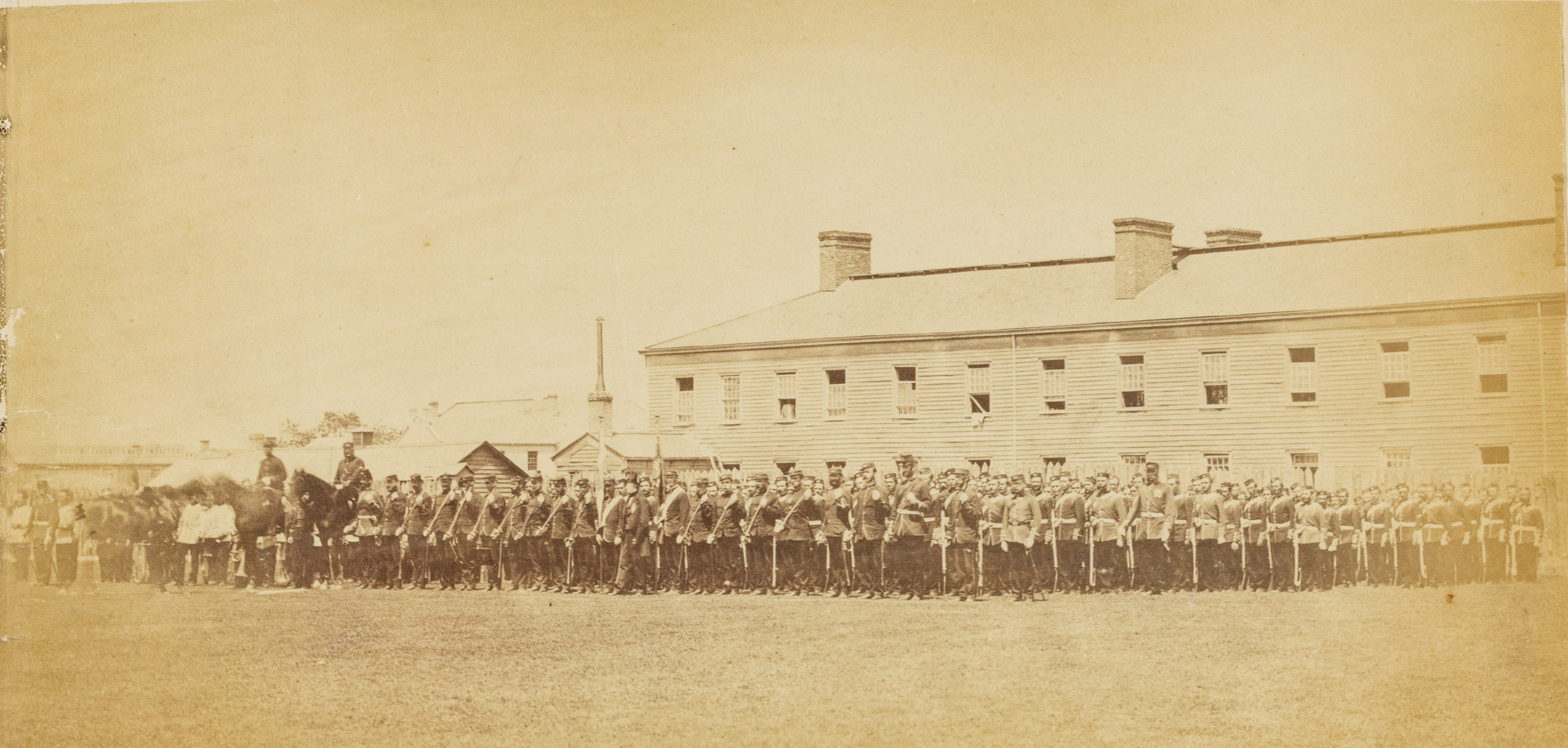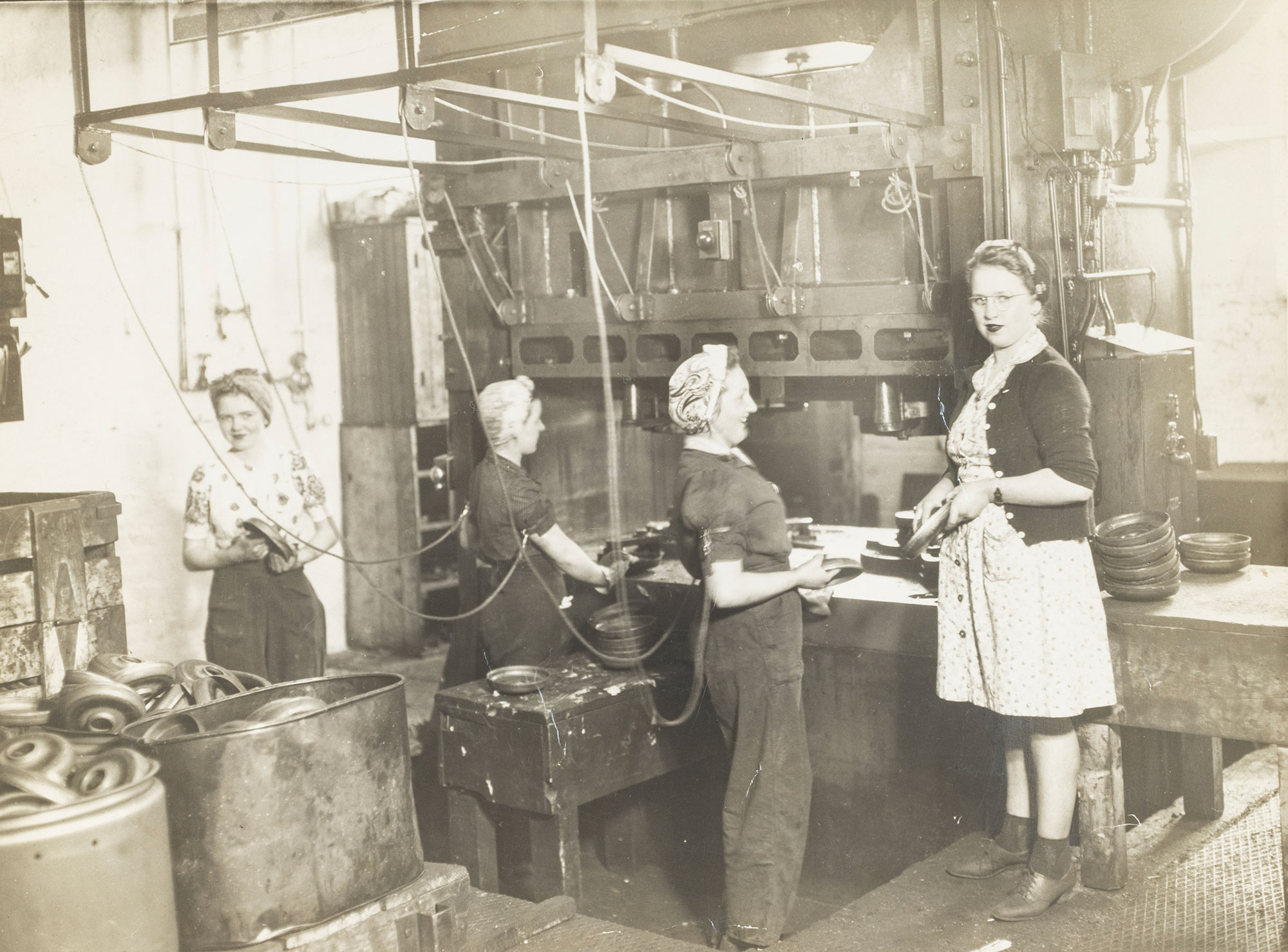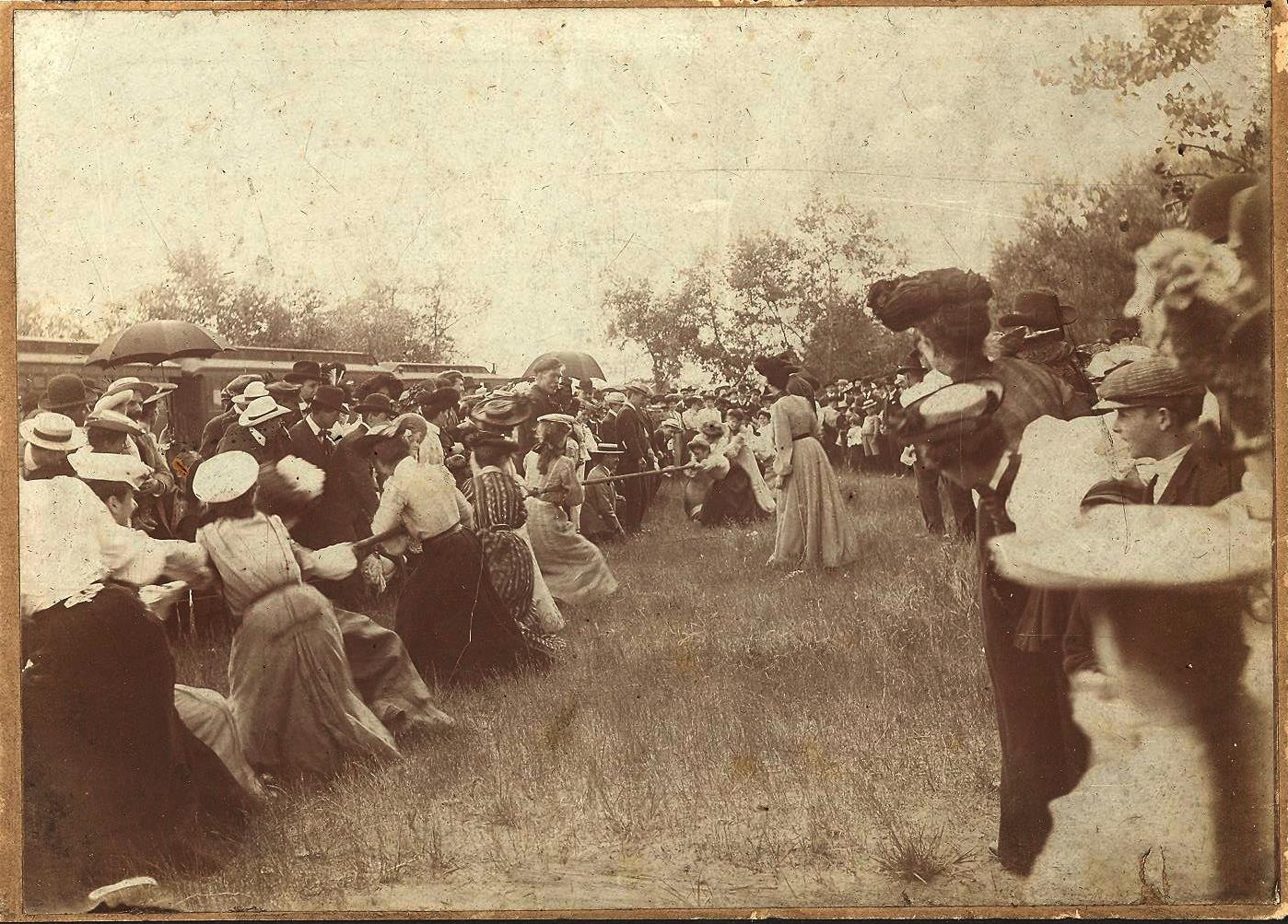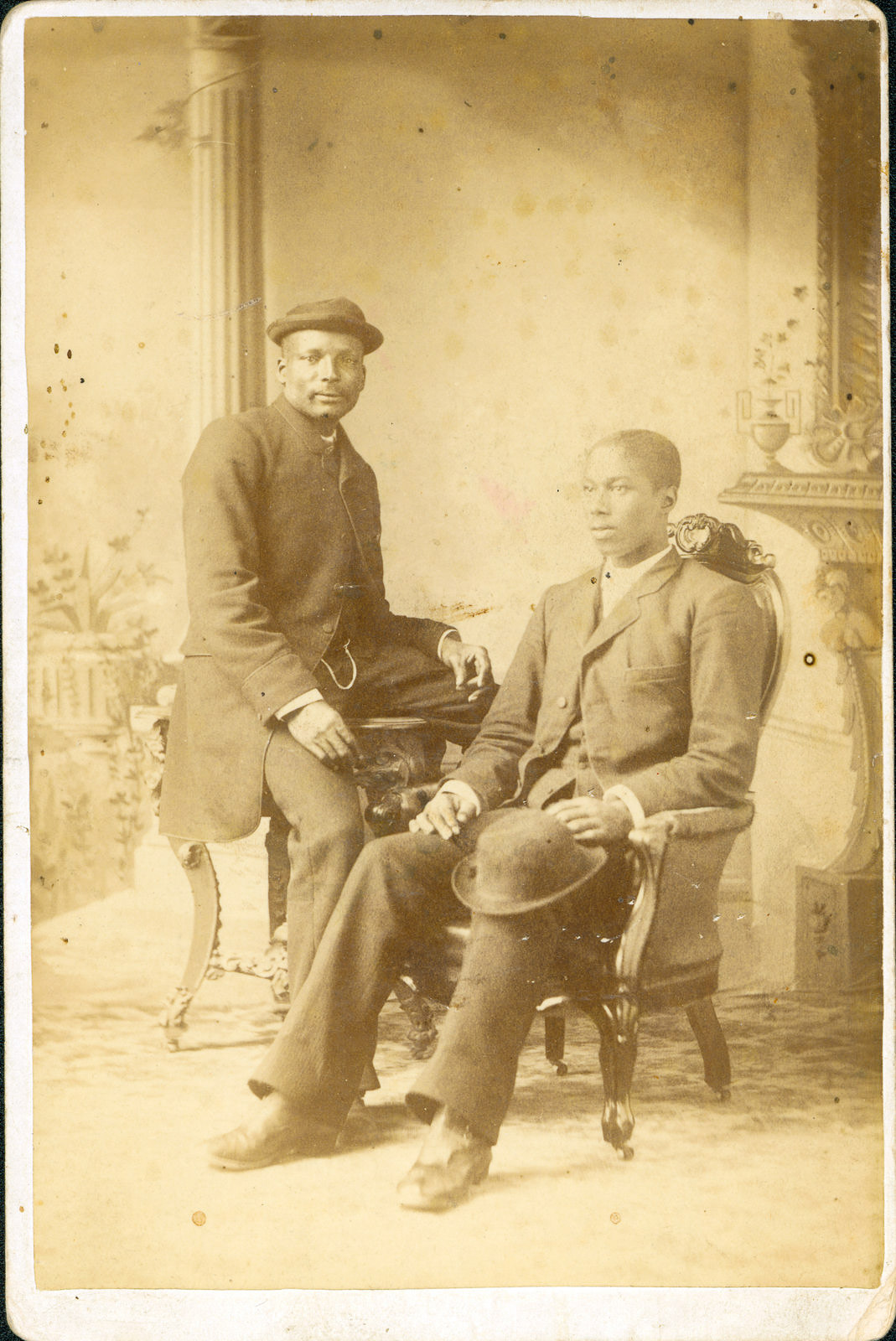Throughout the city’s history, Londoners have worked hard. But they have played hard too.
Both civic leaders and residents recognized the importance of recreation and leisure in creating happy and healthy citizens and workers. Different amenities and attractions also helped bolster London’s reputation in the region and beyond.
But establishing parks, supporting sports teams, and developing different leisure attractions wasn’t straightforward. Competing interests debated what activities were appropriate, where, and for whom.
Explore some of the sports and activities Londoners have enjoyed…
Parks and Recreation
Baseball in London
Boating on the Thames River
The Western Fair
Parks and Recreation
Let us go to work and provide an expansive pleasure ground, a breathing place for the citizens, where they and their children may assemble and breathe purer air.
Sir John Carling, London Free Press, December 19, 1873
Today, Londoners enjoy many parks and trails. Developed from the 19th century through to today, they offer Londoners a place to play, relax, and recharge.
London officials made early moves to establish parks for the citizens of the community. However, it took until 1874 for the city to get its first one, Victoria Park.
By this time, officials and influential Londoners believed parks would help create a healthy, prosperous, and vibrant community. As places for moral and physical improvement, many believed, parks would preserve workers and their children from the social ills that came with urbanization and industrialization.
Over time, London’s parks became what they are today: a source of civic pride as well as places for Londoners to play and relax.
A Moving Force for Parks
London politician and photographer, James Egan, worked hard to establish Victoria Park, the city’s first park. Egan began lobbying in 1867. With the support of London’s Sir John Carling, pictured below left, he achieved his goal in 1873. He convinced Ottawa to sell 13 acres of land that had been part of the old garrison grounds, pictured below right in 1867. Governor-General Lord Dufferin dedicated Victoria Park in 1874.

1972.030.001
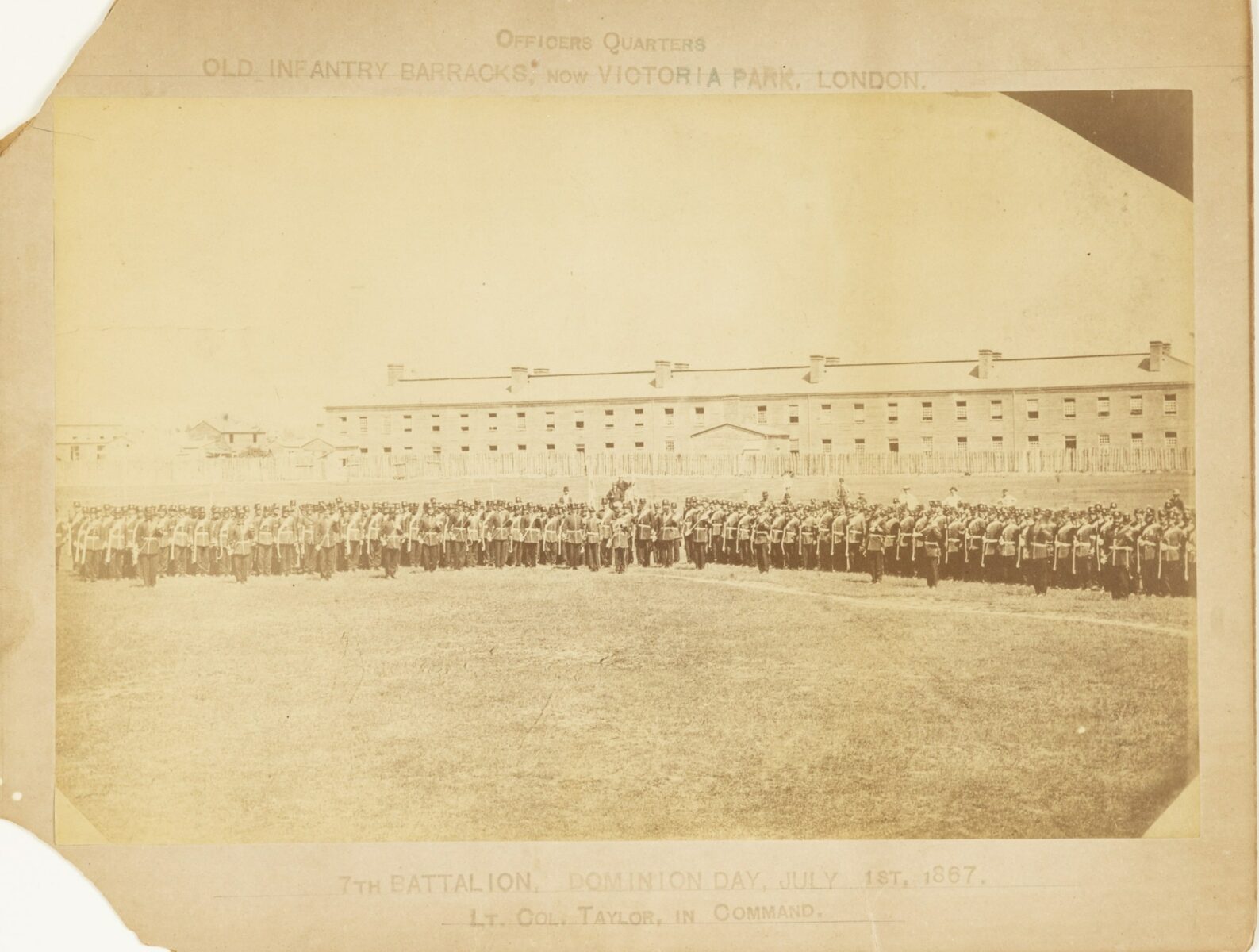
1958.001.205
Victoria Park Design
These three postcards illustrate the transformation of the barren garrison grounds into Victoria Park, an ornamental, landscaped space. From the 1870s through to the early 20th century, the city laid out paths, planted hundreds of trees, shrubs, and flowers, installed a fountain and electric lighting, and built a bandstand, among other things. This design pleased London’s elite who owned the mansions surrounding the park.
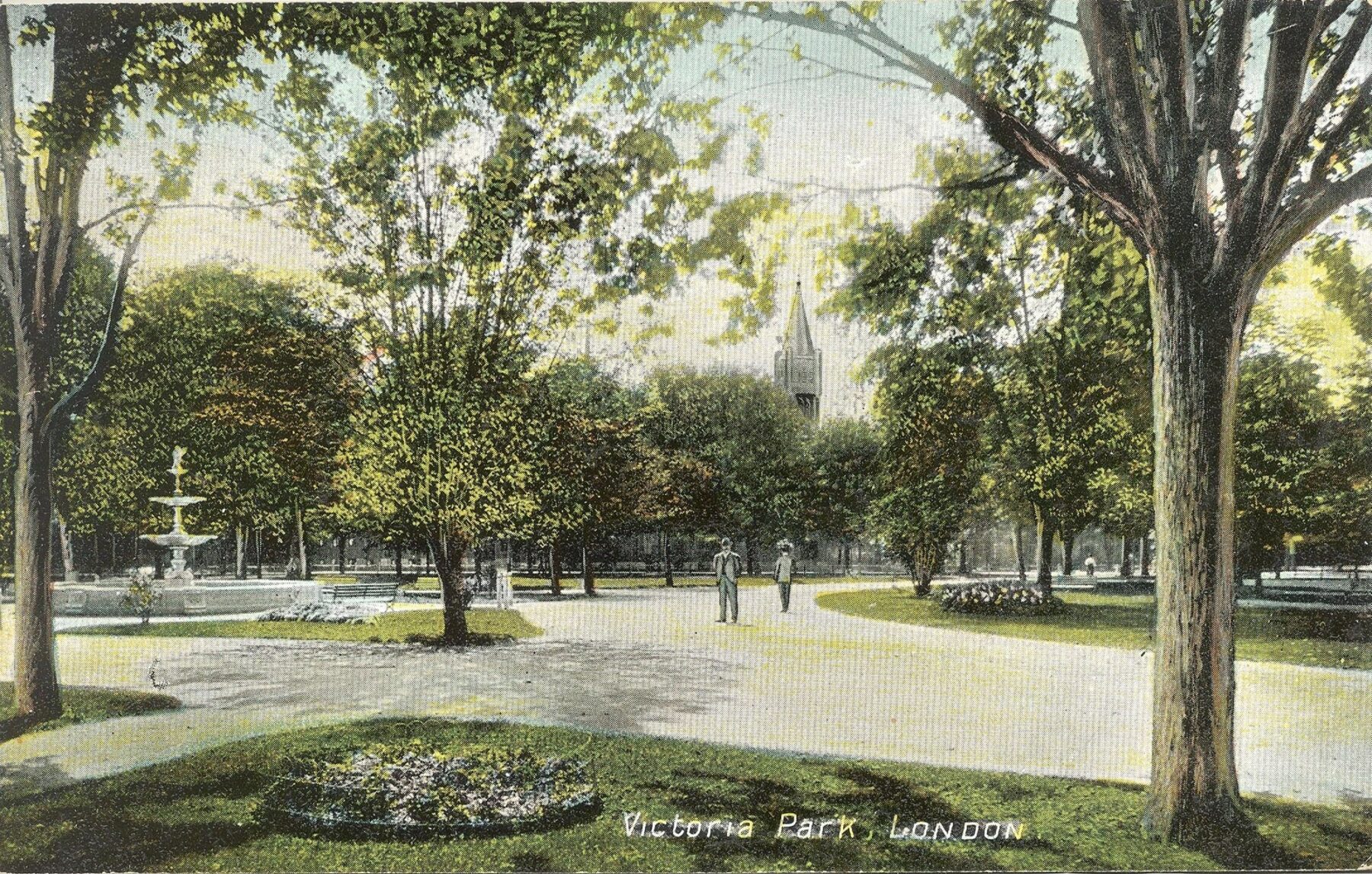
1976.053.402I
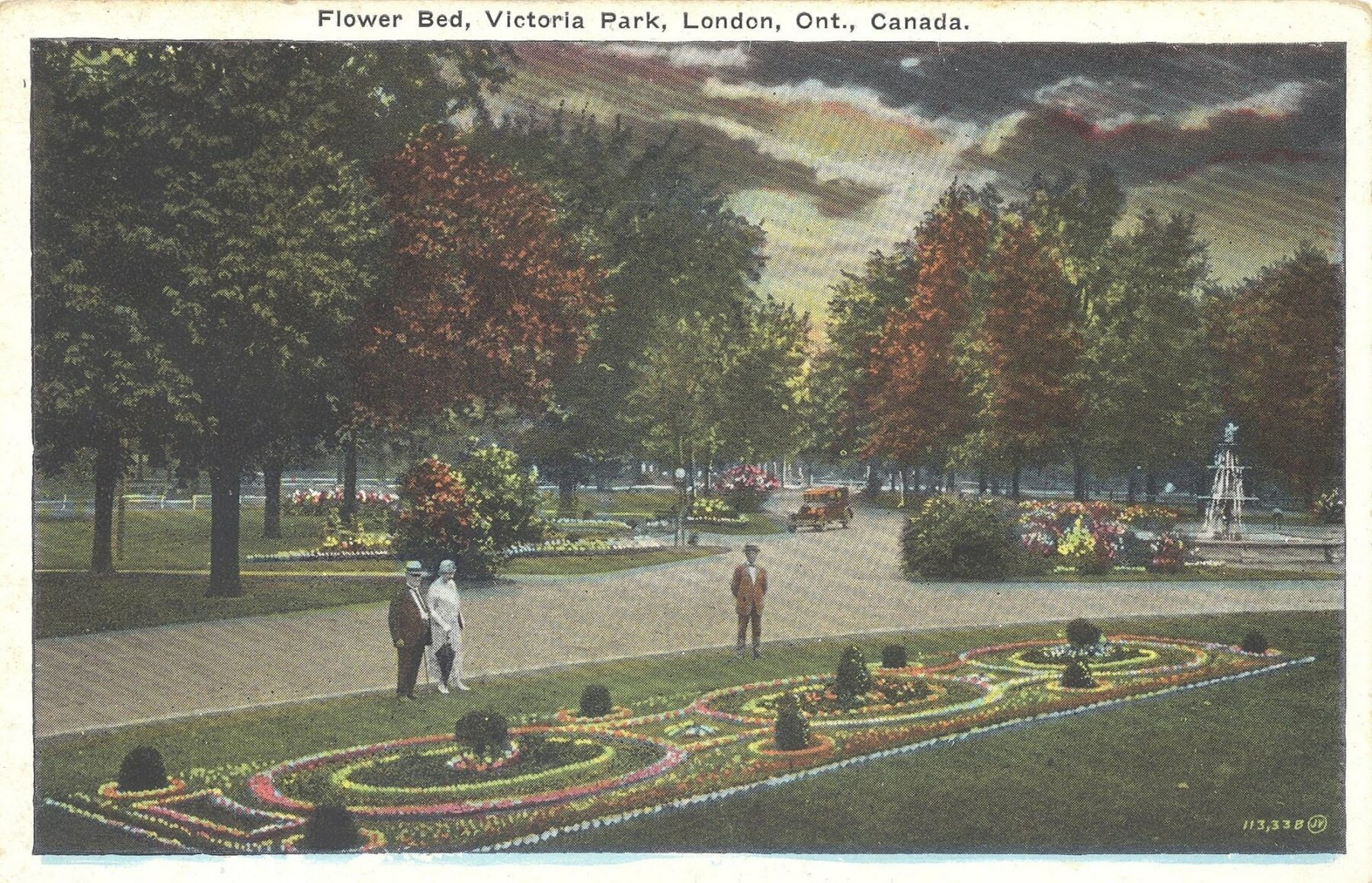
2004.023.002
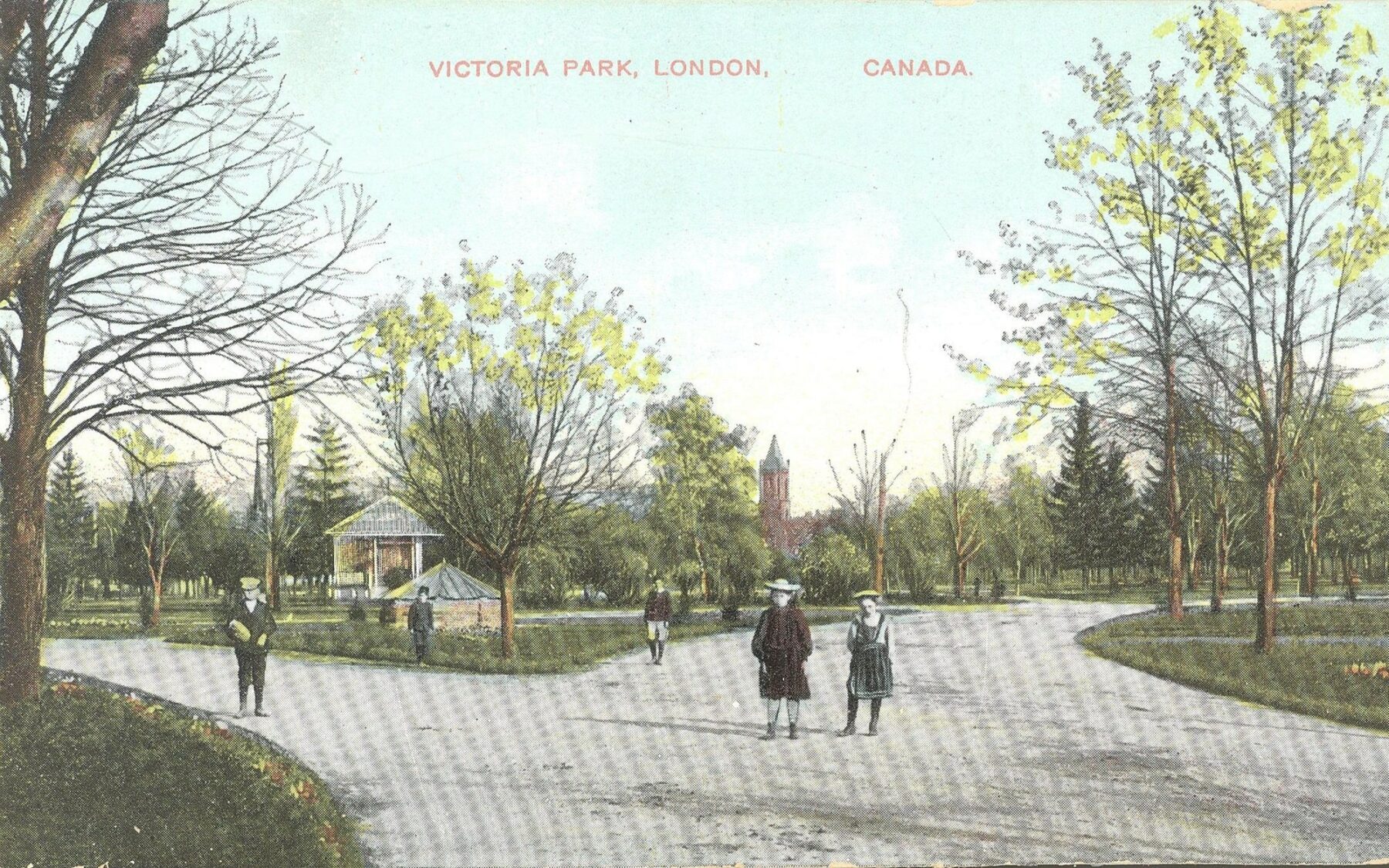
1990.017.002
What Kind of Activities?
In the late 19th and early 20th centuries, city officials approved of sedate and so-called respectable activities like walking or driving in Victoria Park. They rejected sports favoured by London’s working classes, including baseball and cricket. In the 1920s, city officials permitted skating, tennis, and mini golf. Today, Victoria Park hosts crowd-pleasing events including Sunfest, Ribfest, and more.
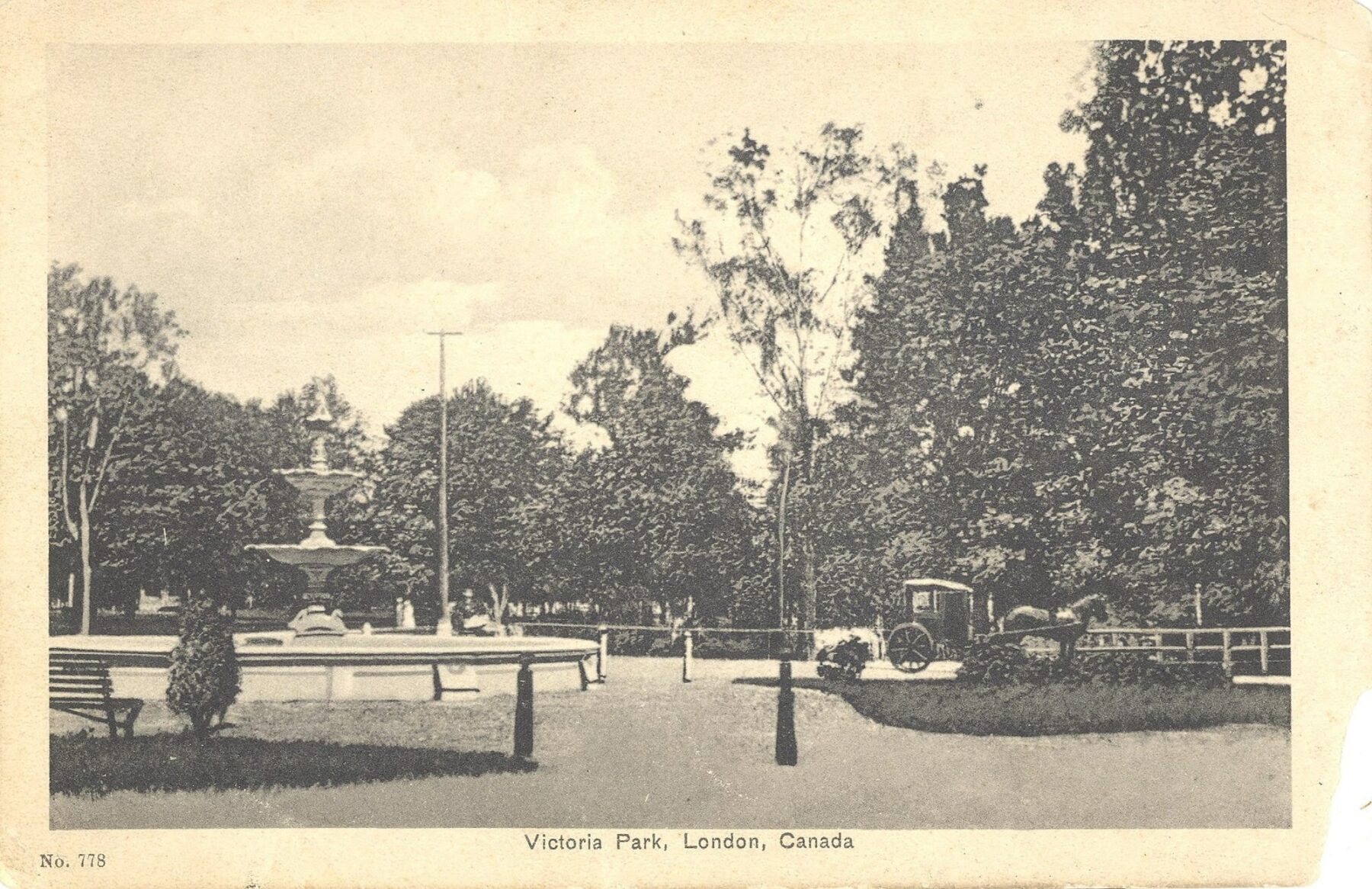
1984.023.002
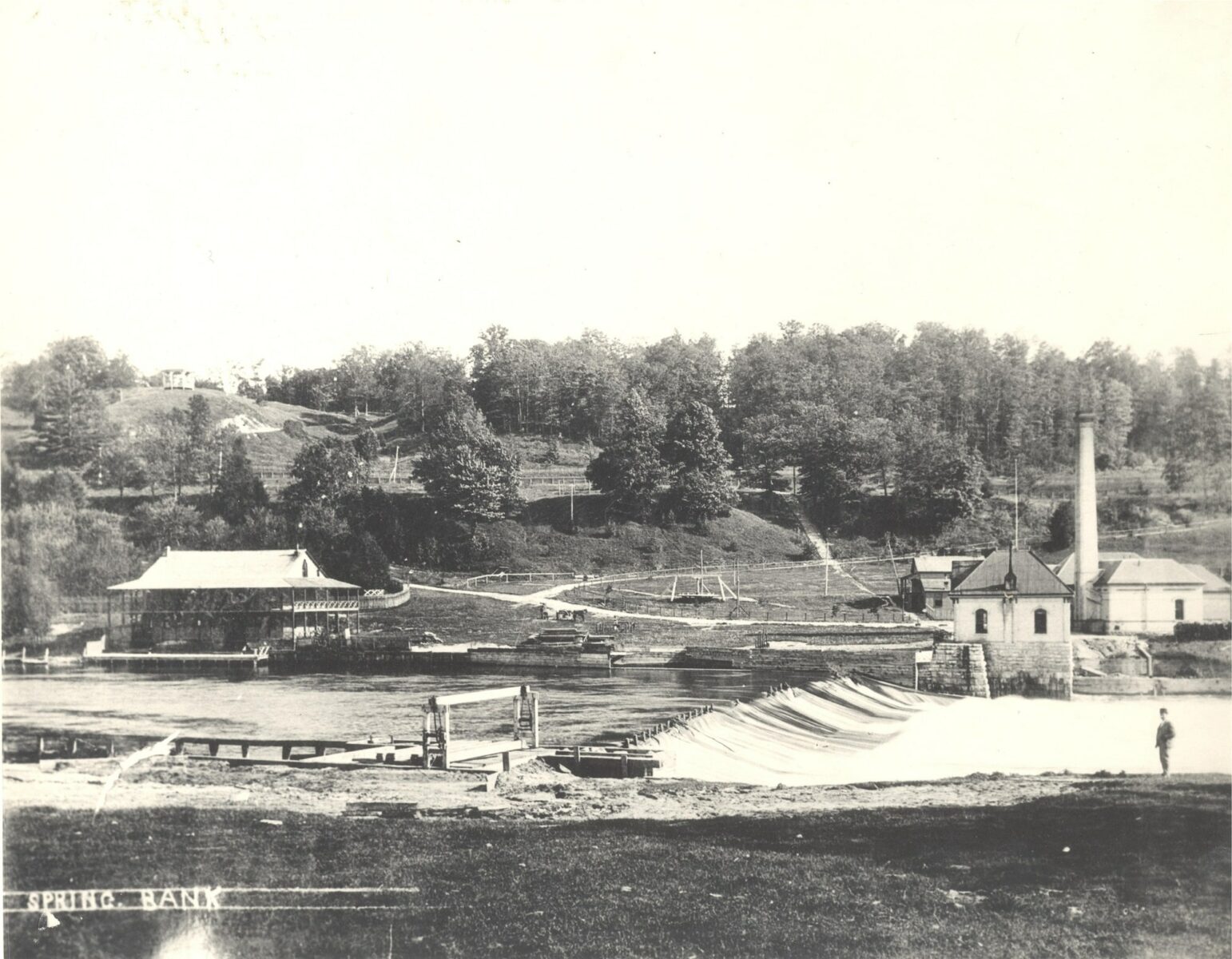
1961.127.041
“Life opens the hamper of purest ozone, and the nerves tingle and jingle with renewed vigour…This is the Park.”
Souvenir of Springbank Park, 1902
Establishing Springbank Park
In 1878, London’s new waterworks began operations. It included a dam and pumphouse, visible in the above photograph. Londoners benefitted from clean water and better fire protection the waterworks afforded. In the surrounding grounds, they also gained a new leisure and recreation destination: Springbank Park.
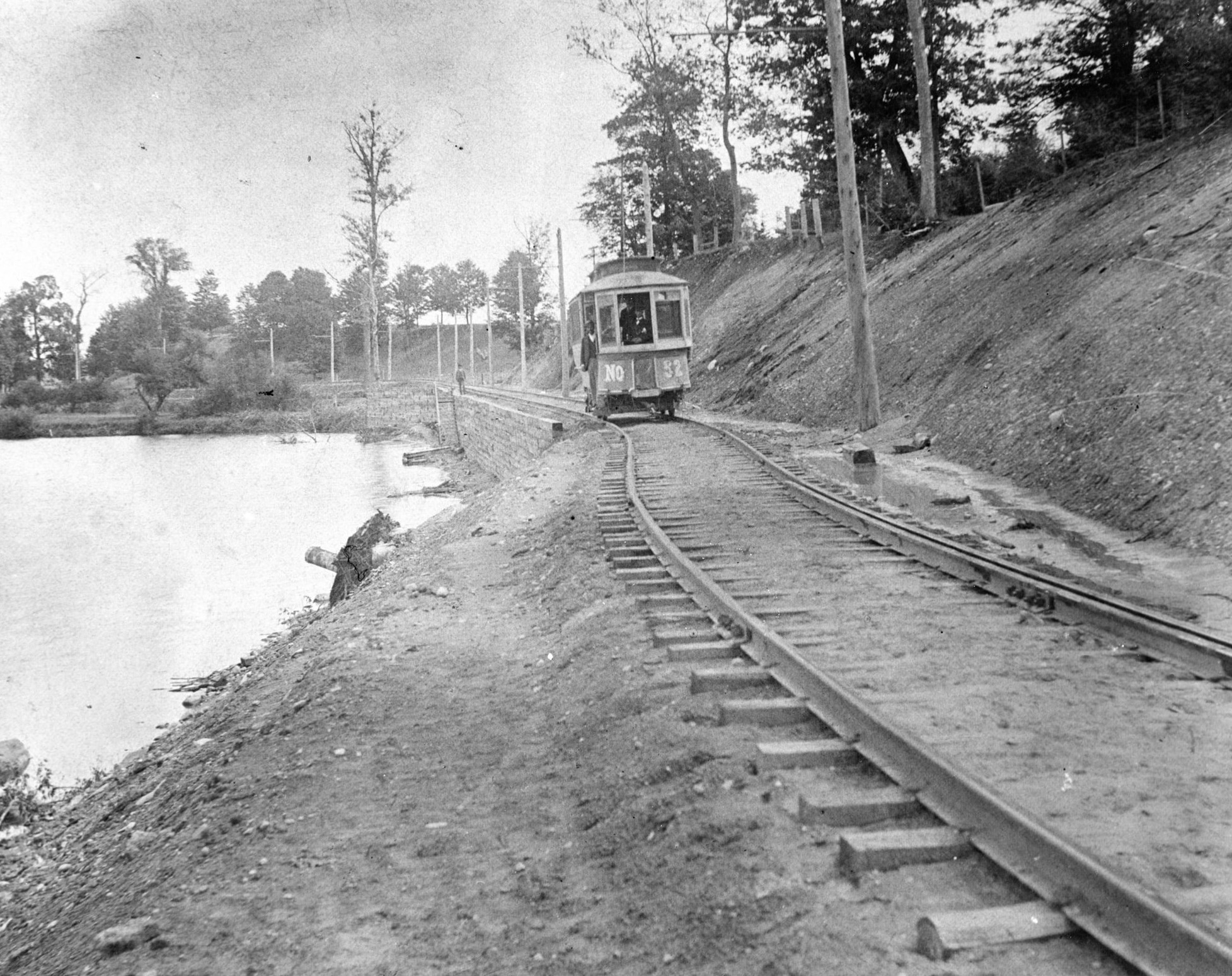
Getting to Springbank
At first steamers transported Londoners between the city and Springbank Park. After the May 24, 1881, sinking of the Victoria, however, Londoners rejected steamers. Only when the London Street Railway introduced its Springbank Line in 1896 did Londoners once more have an easy way of getting to the park.
“Merrymaking at Springbank Park”
New amenities, including the pavilion pictured on this postcard, drew Londoners along the streetcar line to Springbank Park. Built in 1898, the pavilion featured concerts and dancing. At night, incandescent lighting dazzled revelers. Look closely at the foreground of the postcard and you’ll see the set up for tug of war. Men, women, and children took part in this energetic, rowdy game.
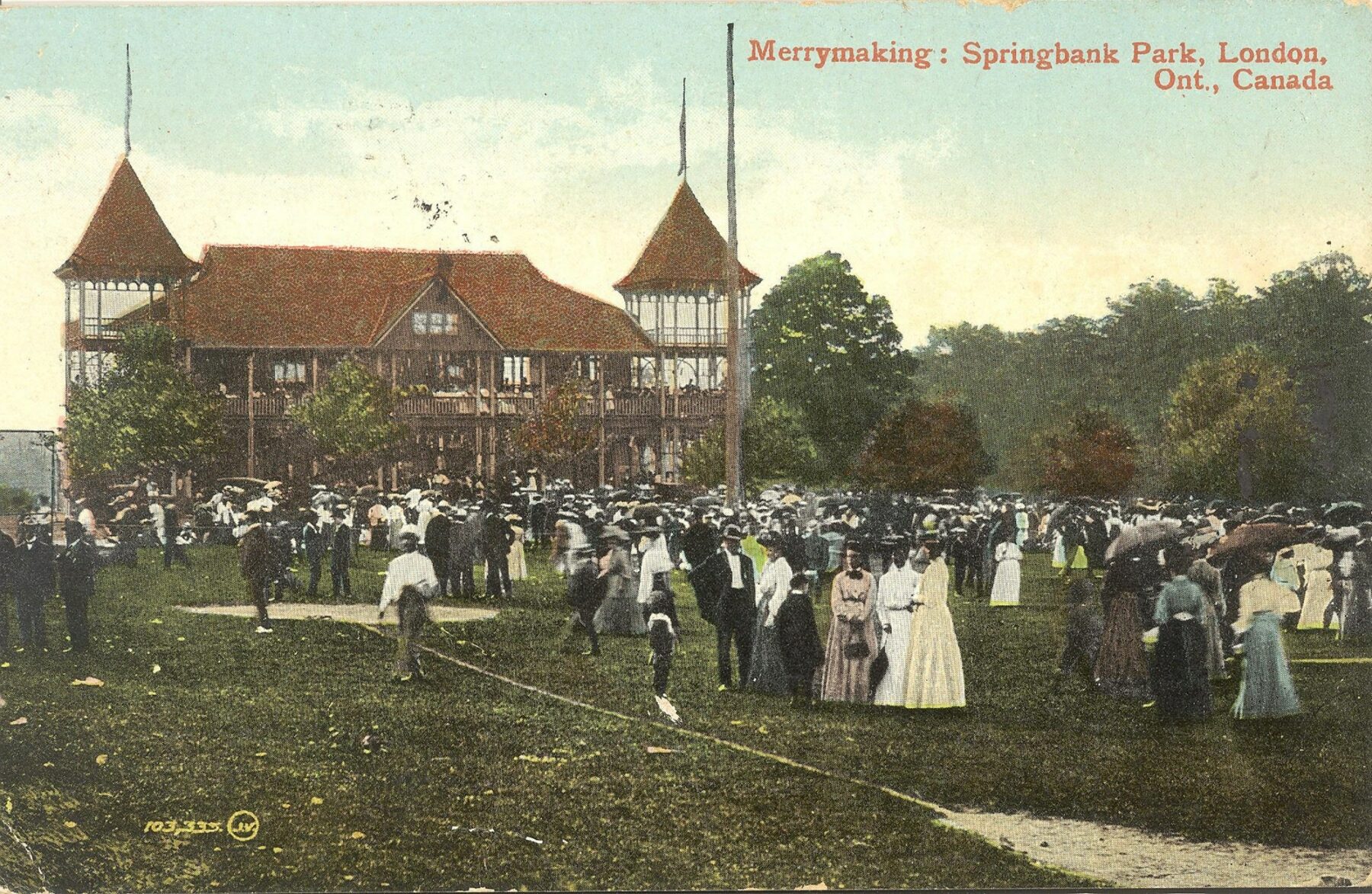
1975.015.172
School Picnic Success
In 1902, seven-year-old Ruth Campbell won this doll in a race at the first annual school picnic at Springbank Park. Until the 1930s, each June eager students from across the city flocked to Springbank to enjoy food and games. Some say the picnics stopped because London’s student population had grown too large. Economic hardship due to the Great Depression may have played a role, too.
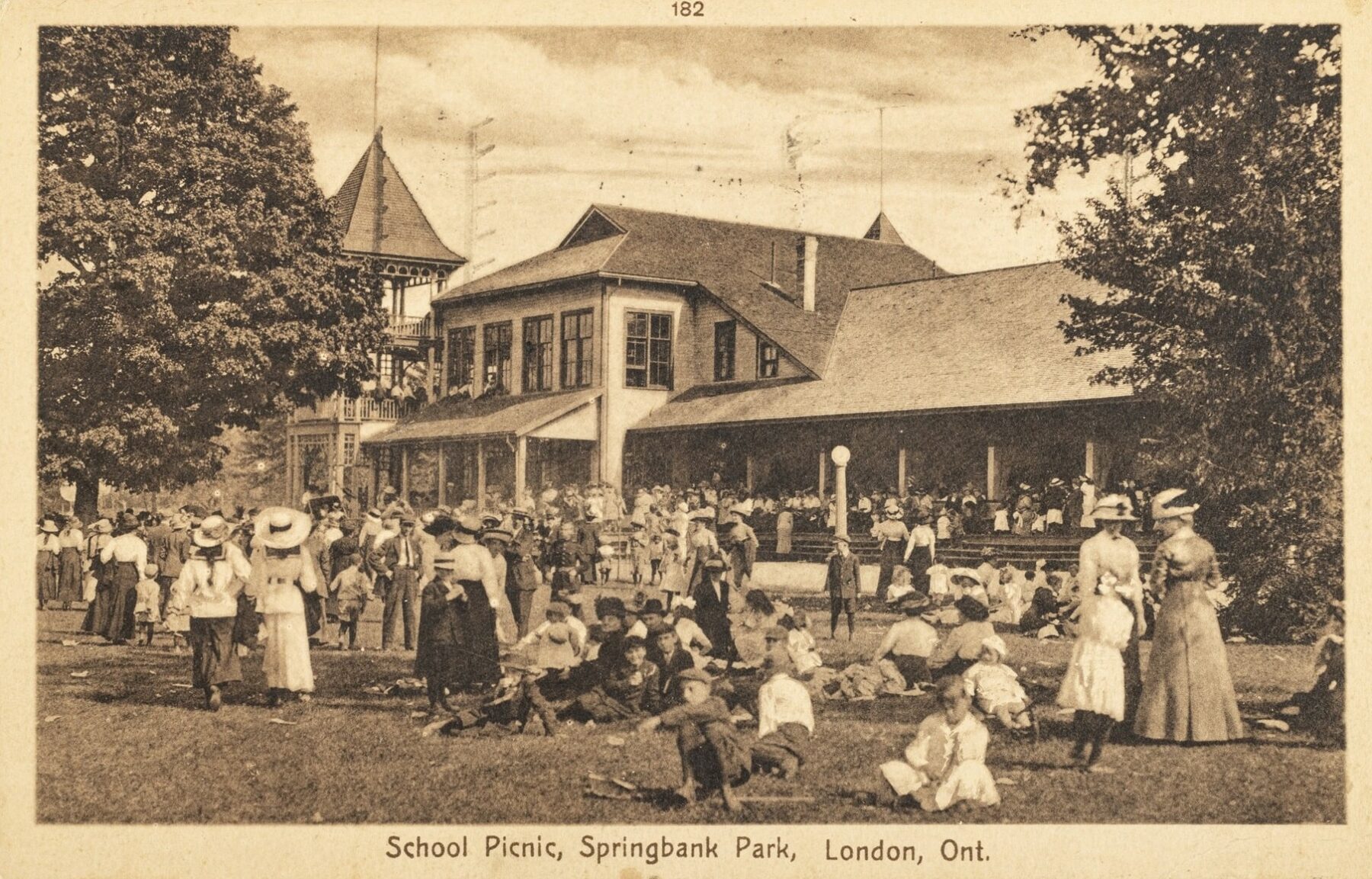
1980.050.005
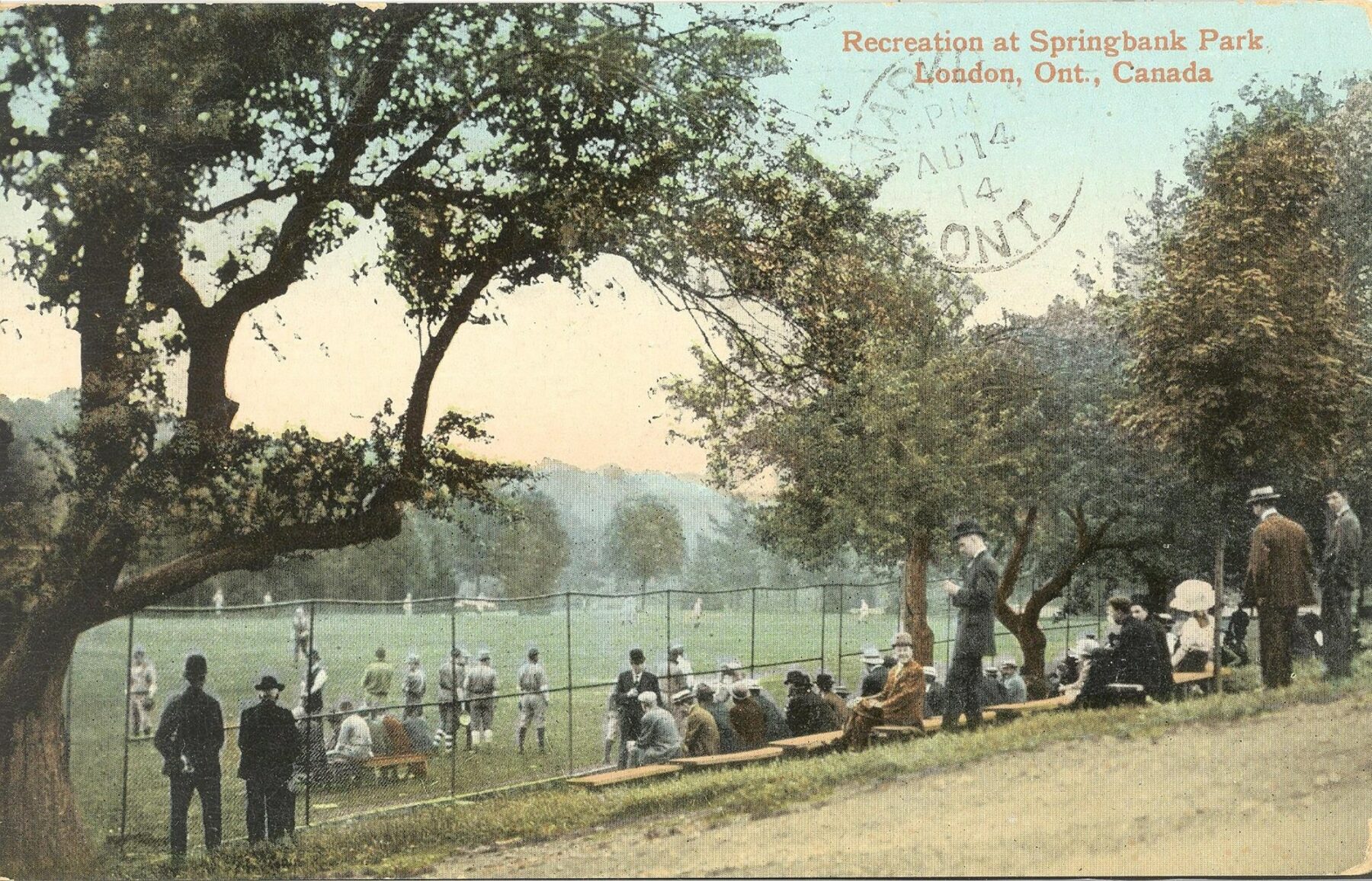
1975.015.170
Sports at Springbank
As this postcard illustrates, Londoners enjoyed playing and watching baseball at Springbank Park. Distant from the city centre and the homes of the elite, there were fewer concerns about the activities in which visitors engaged.
Storybook Gardens
Earl Nichols and Elmo Curtis, commissioners with London’s Public Utilities Commission, proposed the idea for Storybook Gardens after they saw a similar venue in California. London’s version opened in Springbank Park in 1958. It gained immediate fame when, on June 16, Cyril the sea lion, later renamed Slippery, escaped into the Thames River. Slippery made it into Lake Erie before he was recaptured near Sandusky, Ohio. He returned to a hero’s welcome in London on July 6, 1958. Although Storybook Gardens no longer has a zoo, it still continues to delight visitors.
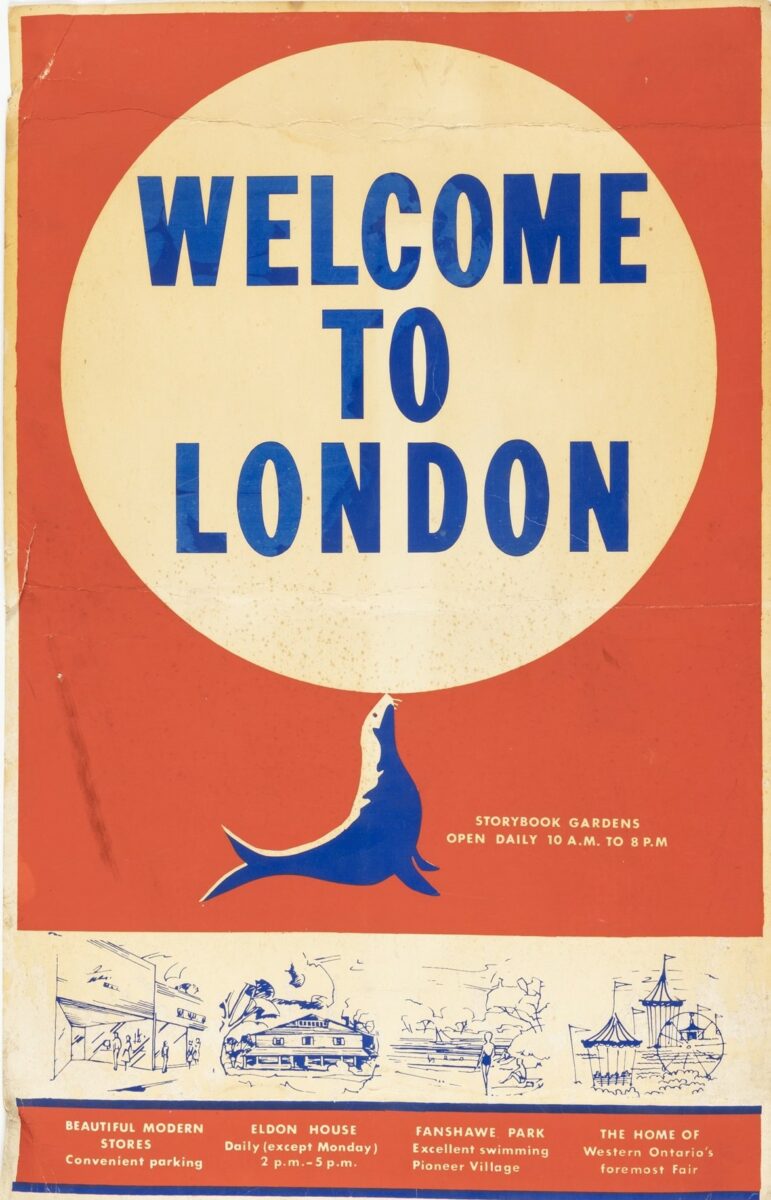
1984.004.006
Thames Park
Here children swim in the pool at Thames Park in the late 1920s. Opened in 1908, Thames Park, according to the London Advertiser, was the first public playground for children in Canada. For local Playground Movement advocates this was a good start. They still wanted supervised playgrounds.
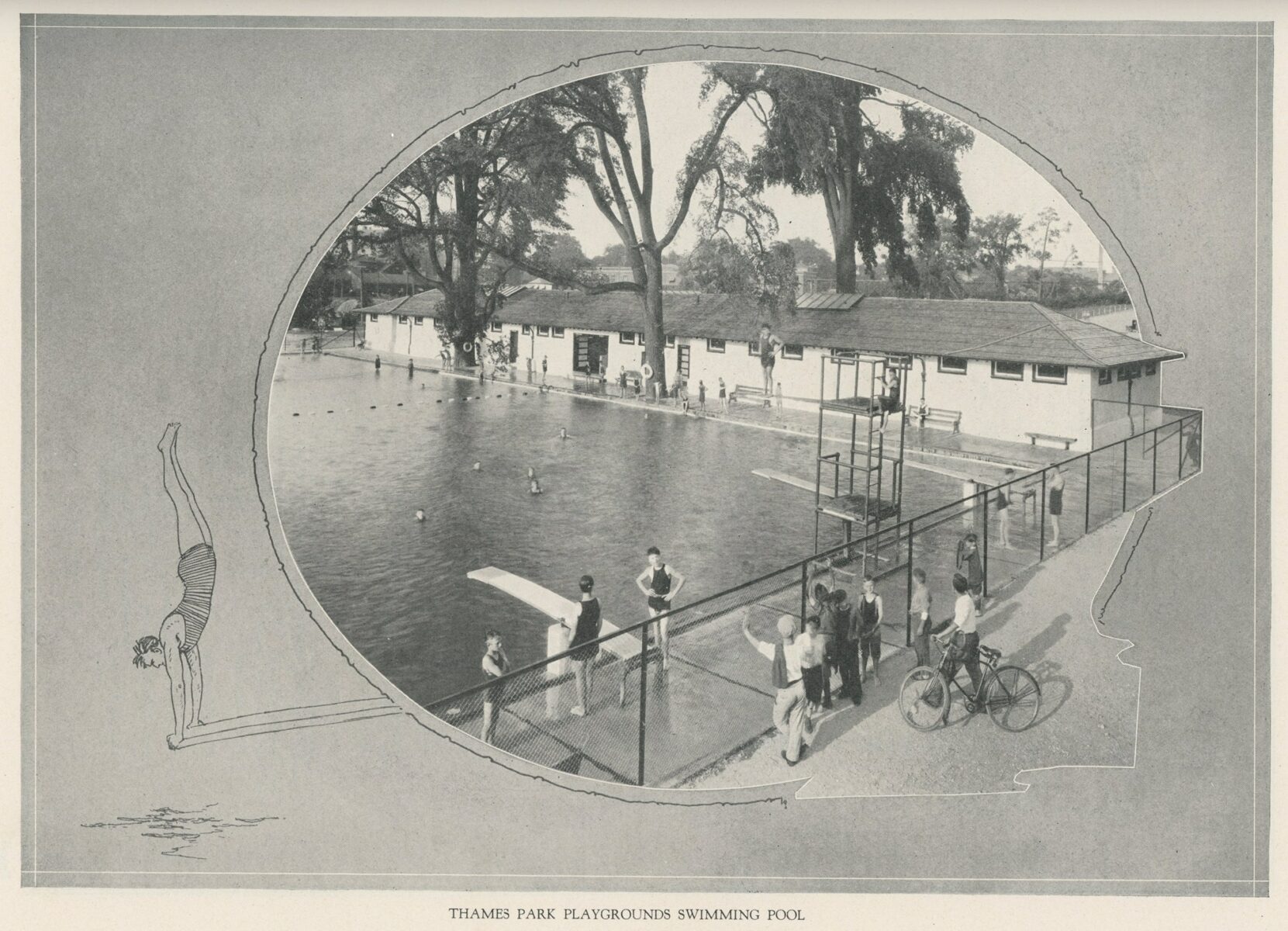
1991.005.140
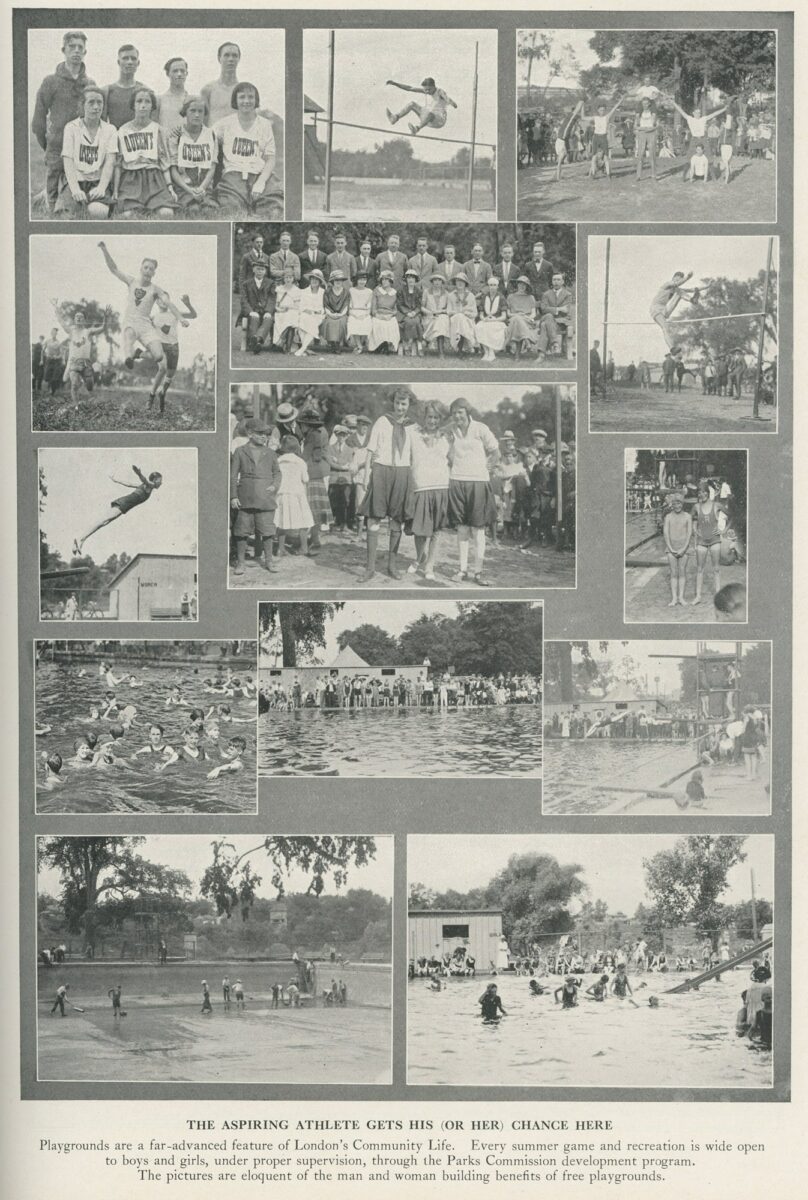
1991.005.140
Supervised Playgrounds
Boys and girls enjoyed a range of supervised activities at London’s different playgrounds from 1920. Attracting children aged eight to 16, in the 1921 season alone, 99, 511 children attended. Although everyone was welcome, advocates hoped the playgrounds would attract children from poorer families who could not afford other summer activities. They believed children engaged in supervised activities would learn the attitudes and behaviours that would prepare them to be successful adults. As well, advocates argued that children busy at supervised parks would not turn to crime.
Track made me the athlete I was… When you’re in the neighbourhood, you play, you run, you jump. We were conditioning since an early age – we didn’t know that, of course. We were just having fun.
Barry Howson, 2023
Training an Olympian
Former Londoner Barry Howson won these ribbons in track and field competitions and relay races at Silverwood’s Park. The games he played at the local park prepared him for his future success in sports. In 1964, Howson became the first Black member of a national sports team when he played basketball for Canada at the Tokyo Olympics.
Playground Supervisor
Barry Howson is pictured in this 1958 photograph of playground supervisors (back row, eighth from right). Having benefited from such supervisors as a child, as an older teen he became the teacher. Howson continued that role as an adult, teaching and coaching for 49 years in Sarnia, Ontario.
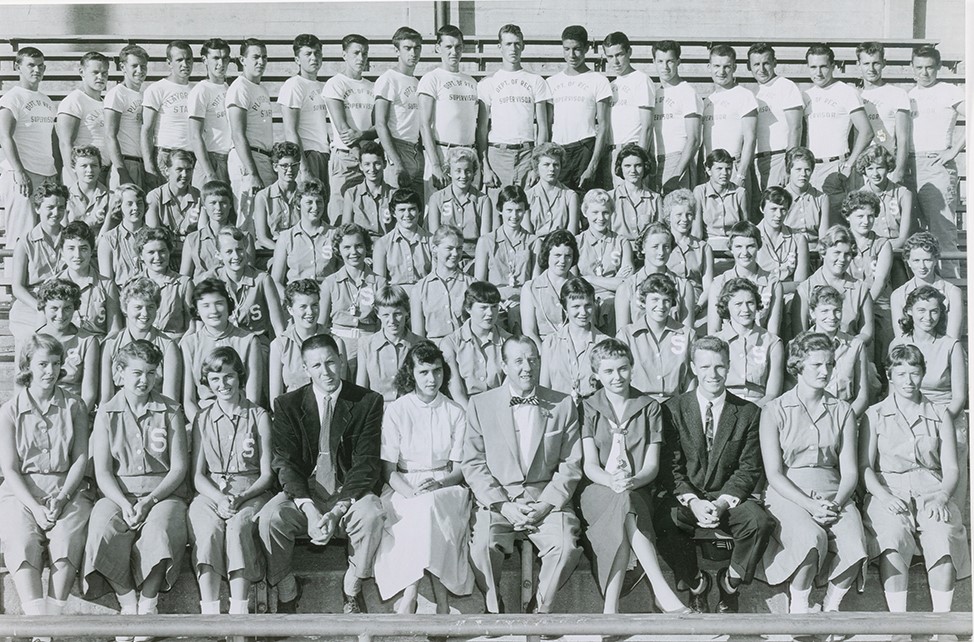
2024.005.010
Baseball in London
Baseball has been very popular in London the past season, and large crowds invariably attend first-class games…
The New York Clipper, October 14, 1876
Londoners have enjoyed baseball as spectators and players from as early as the 1850s.
Baseball has a long history in London.
That history is about the places where Londoners have watched and played the sport.
It’s also about the many teams that have called the community home, some famous for their accomplishments and others less well-known.
And baseball’s history in the community is about people. Londoners of all ages and from all backgrounds have enjoyed the sport from the community’s earliest days through to today.
London’s Tecumseh Baseball Club

This photo features the 1876 London Tecumsehs, a team established in 1868 with the merger of the Forest City and London baseball clubs. It was named after the Tecumseh Hotel where the team had been formed. The hotel, for its part, was named for the Shawnee chief, Tecumseh, killed while fighting for the British during the War of 1812.
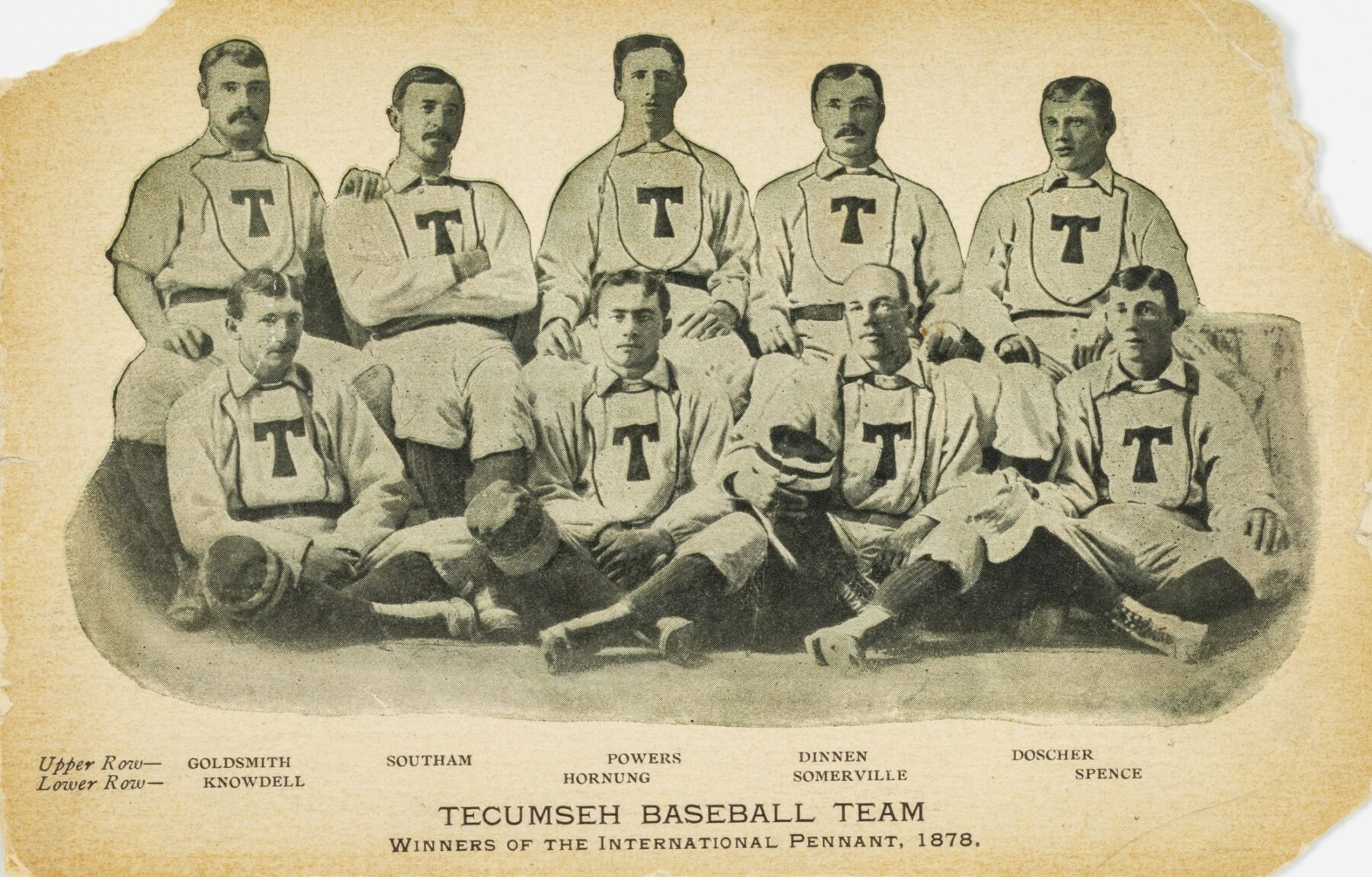
1965.056.001
In 1877, the Tecumsehs won the pennant of the International Base Ball Association, not 1878 as this postcard states. London competed against Guelph and five American teams in the Association. But after this high, the team’s fortunes plummeted. It folded in 1878 after fan support declined as the team lost games. A new Tecumseh team played in 1888-89 and again in the 1920s.
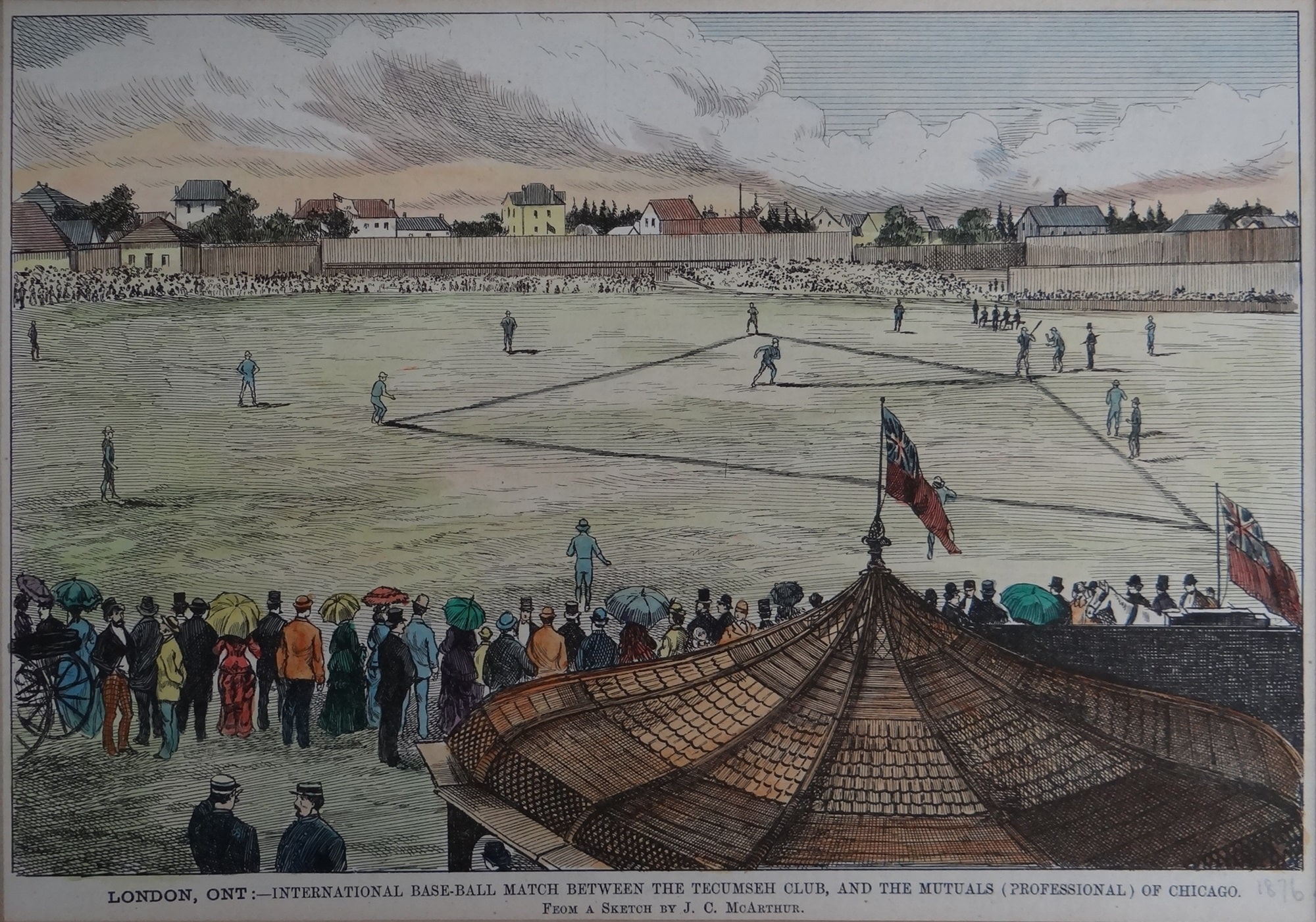
2010.004.008
An International Match
In the summer of 1876, the London Tecumsehs played the Chicago Mutuals (above). They lost 16 to 6. The game took place at the old fairgrounds at Wellington and Pall Mall streets. Before that, the team had played on the garrison grounds until city officials created Victoria Park. The park’s creators did not think baseball was an appropriate activity for the space.
Enjoying a New Playing Field
This image captures an 1877 game between the Tecumsehs and their arch-rivals, the Guelph Maple Leafs. London won 5 to 2. They played at Tecumseh – now Labatt – Park, a new baseball field opened that same year. The team relocated after a dispute over building a fence around their old grounds. The new site was close to downtown businesses and the railway station. This suited London’s business owners and teams travelling to London for games.

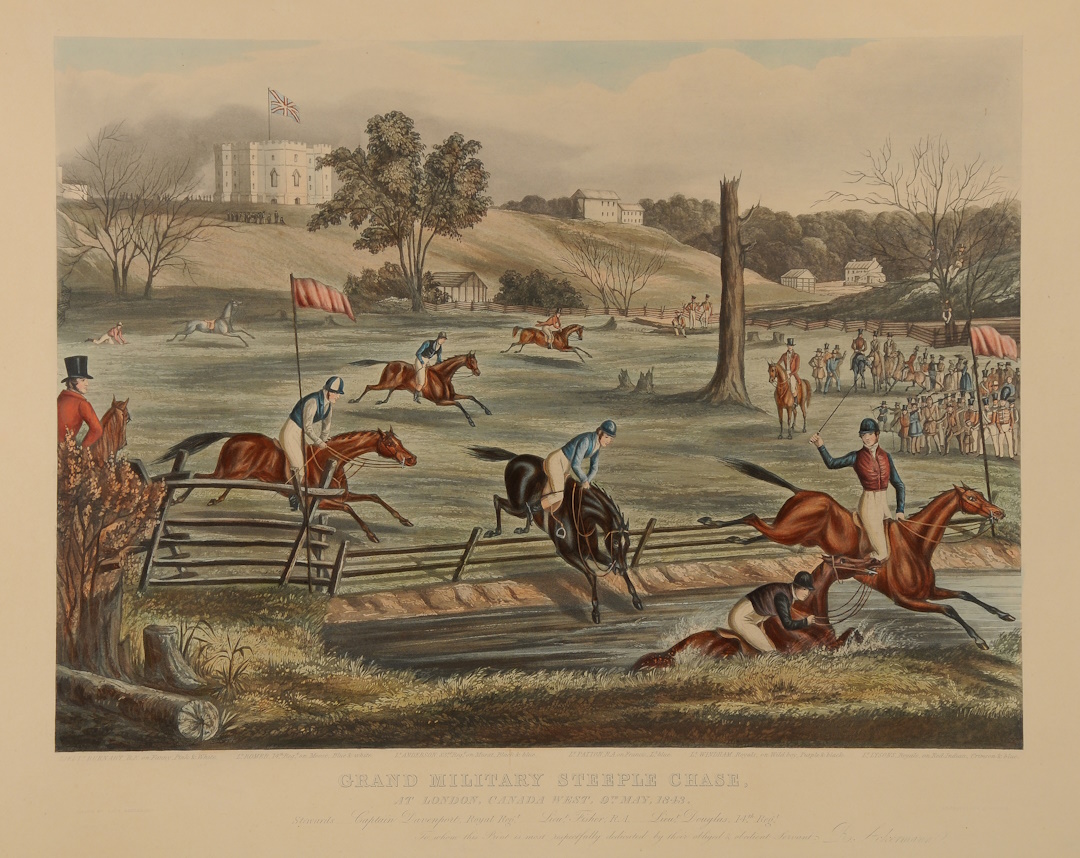
Before Tecumseh Park
This image, by Lady Eveline Alexander, depicts British military officers participating in a steeplechase on May 9, 1843, on the site that became Tecumseh Park in 1877. This Thames River flood plain had a long history. First Nations and European settler farmers grew crops here. As a common area, animals grazed here. Later, it became a place for Londoners to enjoy a variety of different recreational activities.
Labatt Memorial Park
In 1936, the Labatt family purchased what was by then a crumbling Tecumseh Park. They donated it to the city along with $10,000 for improvements. The park was renamed Labatt Memorial Park to recognize the family’s contribution.
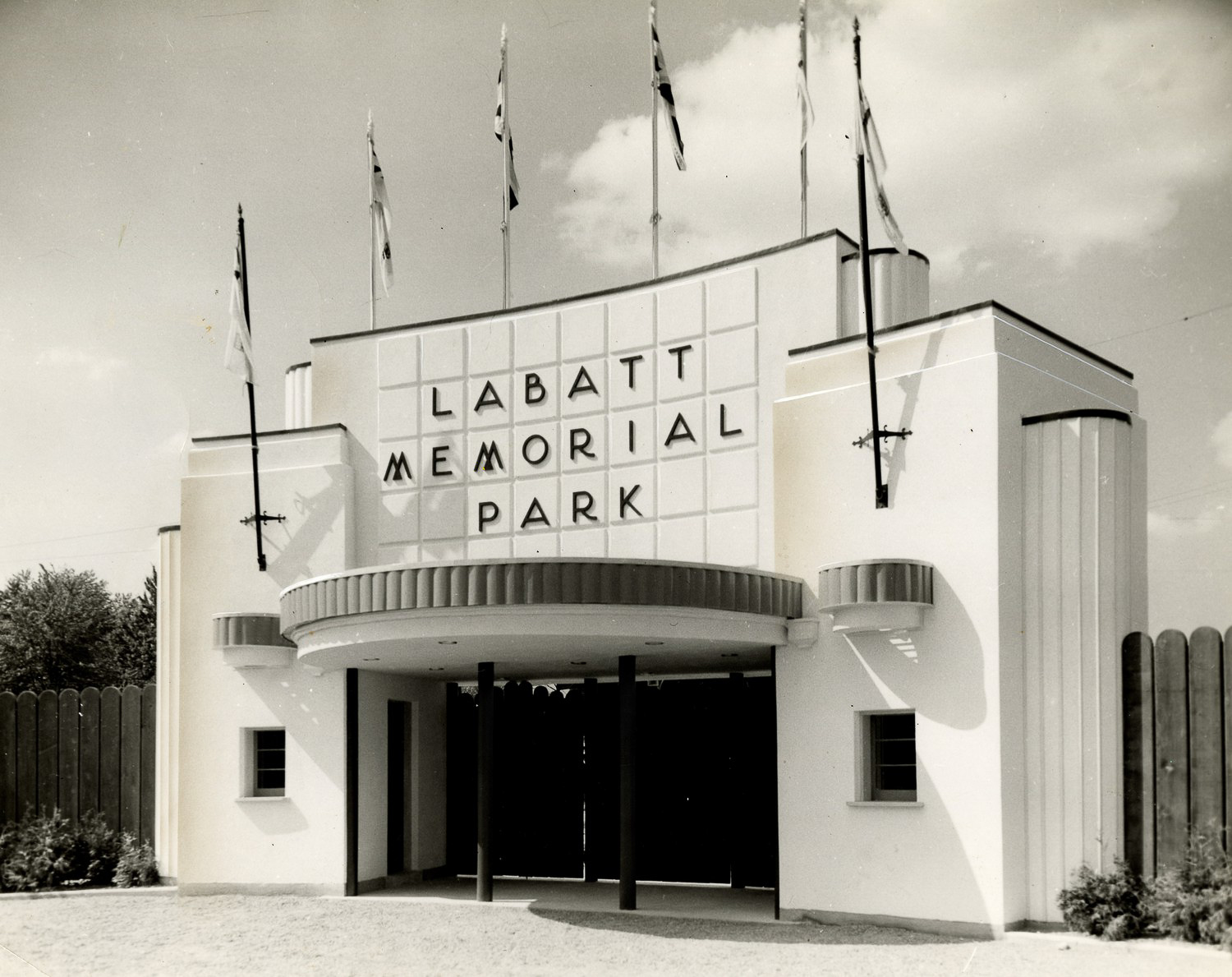
A Heritage Site
Londoner Madeline Campbell scooped up the souvenir baseball at Labatt Memorial Park in 1994. She attended the Canada Day ceremony that marked the park’s designation as a historic site. Today Labatt Park is recognized as the world’s oldest continuously used baseball grounds.
Amateur Baseball in London
From the late 19th century and into the 20th century, London was home to a variety of amateur baseball leagues. At various times, teams of the City, Merchant’s, Springbank, and Central leagues, among others, competed against each other. Playing at Tecumseh Park and other baseball diamonds around the city, the teams provided entertainment to eager London players and spectators alike.
City Champions, 1909
In 1909, Young’s Base Ball Club team won the City League championship for a second year, for which accomplishment they received the Beck Trophy. In 1909, the City League was composed of four teams: the Stars, Ramblers, Rockets, and Youngs. According to a July 17, 1909, London Advertiser article, “the Youngs walloped the Ramblers to win the City League.” The City League was one of several that helped to satisfy London’s many baseball fans.
Mr. Silverwood
Hazel Shackleton, 2006
would treat us like royalty.
Women’s Softball
Hazel Shackleton Ferguson (back row, third from left in photograph) wore this Silverwood softball jersey when she played for the company team in the 1930s. Other businesses in town, including Kellogg’s, Smallman & Ingram, and Gorman and Eckert, among others, also sponsored or organized women’s softball teams in the late 1920s and into the 1930s. They recognized the teams fostered employee welfare, loyalty, and satisfaction. As well, media coverage of the teams advertised the companies, helping to project a positive image about their products and services.
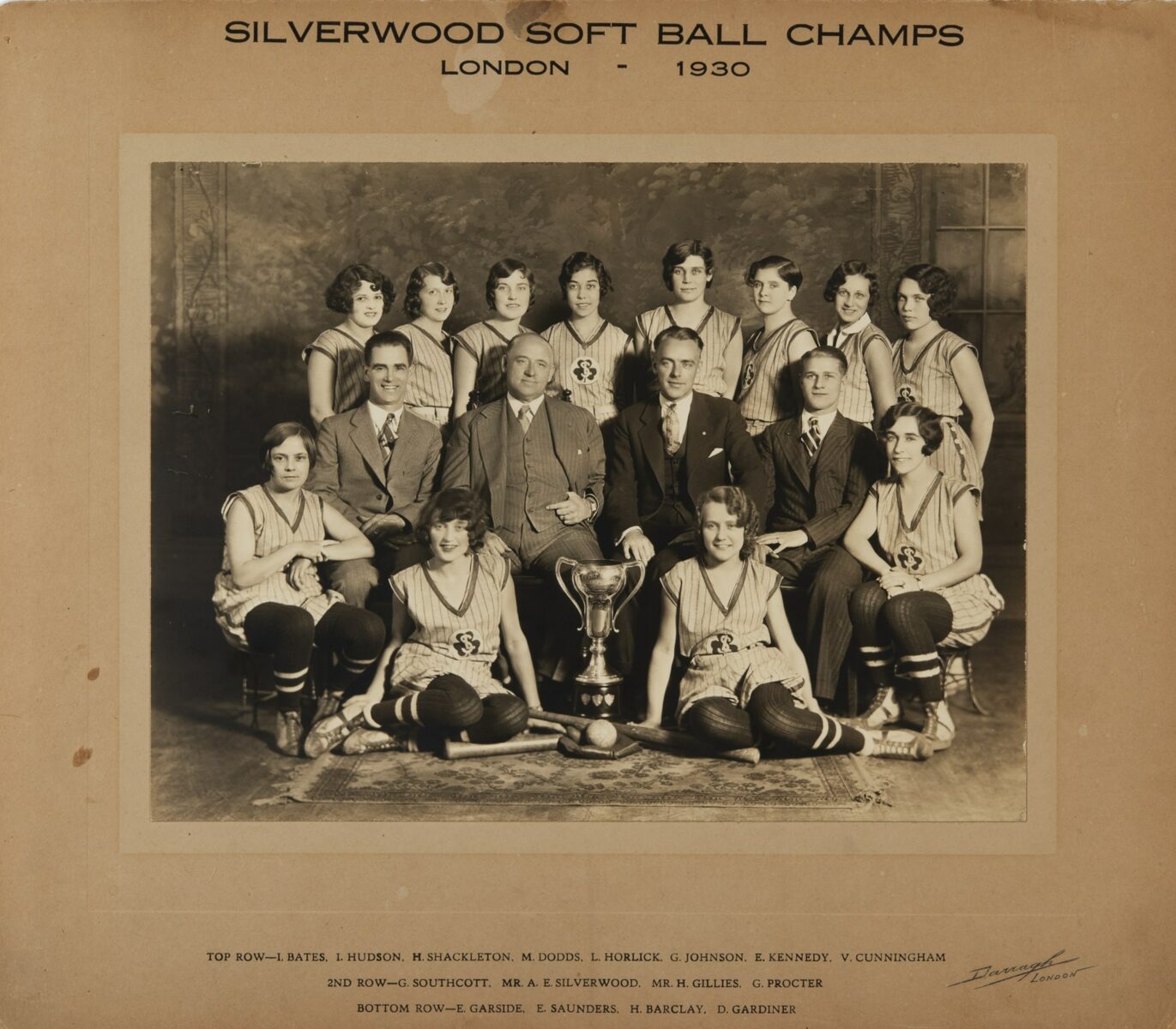
2019.020.002
The London Tigers
The London Tigers were a professional double A Eastern League baseball team associated with the Detroit Tigers. The team played from 1989 until 1993 in Labatt Park. It was initially very popular, drawing over 167,000 fans in its first season. Support later petered out.
Cleveland Brownlee and the London Majors
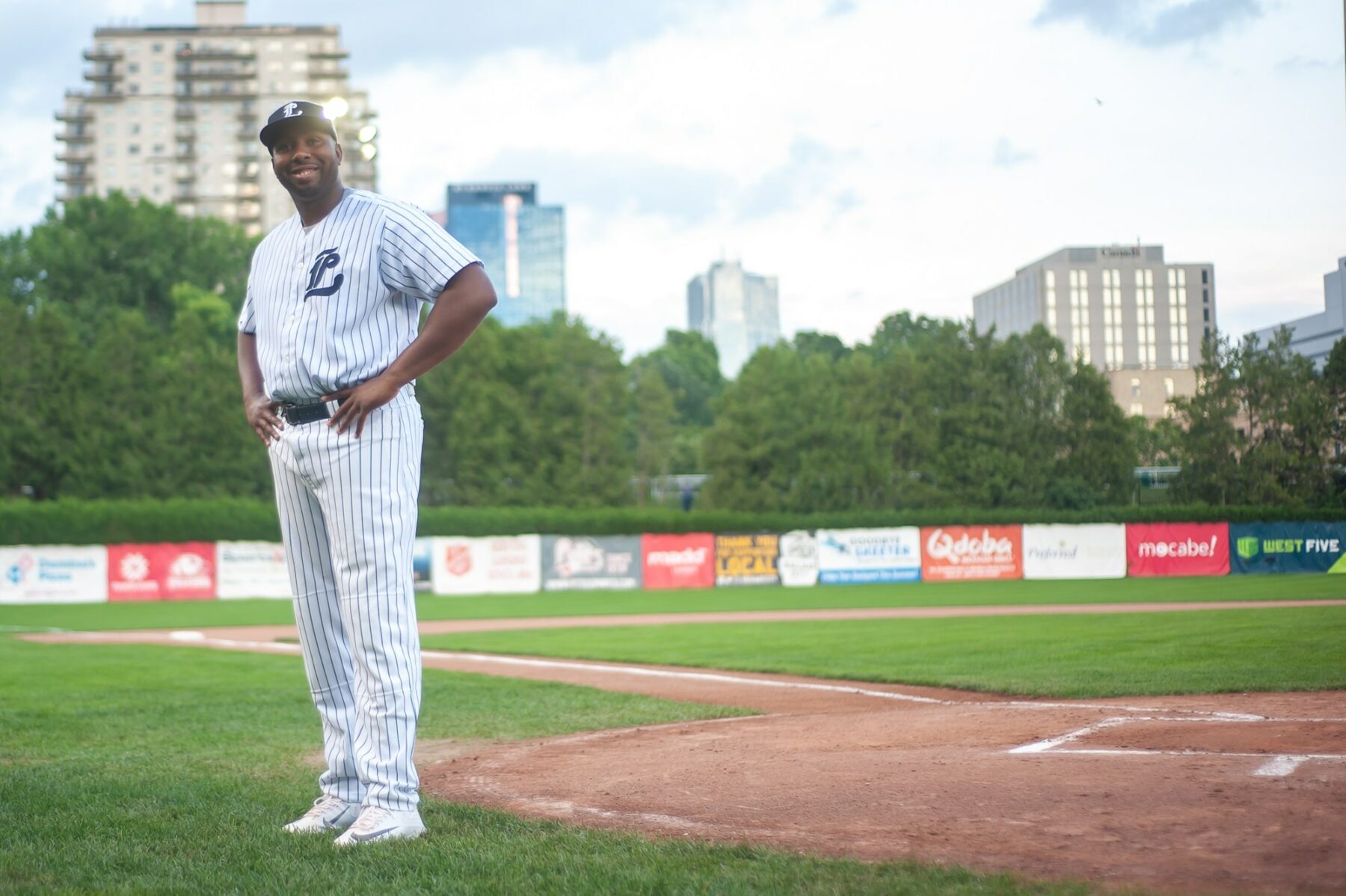
London Majors player Cleveland Brownlee wore this jersey during his 2010 rookie year. His teammates later signed it to mark his first season with the baseball team. Originally from Atlanta, Georgia, Brownlee came to London to play for the Majors. The team traces its history in the city to 1925, the year in which London joined the Intercounty Baseball League.
It made me feel like I was part of history…
Cleveland Brownlee, London Free Press, July 9, 2018
Breaking Records
Cleveland Brownlee used this baseball and bat when he became the Majors’ career home run record holder on July 7, 2018. During that game, Brownlee hit his 71st home run as a London Major, topping Dave Byer’s long-standing record of 69.
Imagine the feeling that you get when they give you that call to say thousands and thousands of people have been through this league, and out of all those people you qualify to be in the top one-hundred players of all time…
Cleveland Brownlee, 2024
One of the Greats
London Majors player Cleveland Brownlee received this golden bat to mark his inclusion among those named to the Intercounty Baseball League’s list of 100 top players of all time. The IBL chose its top 100 players to help mark the organization’s 100th anniversary. It began in 1919.
Watch the video to learn more…
Boating on the Thames River
…the River Thames bids fair to become a scene of healthy excitement and enjoyment…
London Advertiser, May 11, 1892
The Deshkan Zibii (Thames River) has long been a transportation route and a place for recreation and enjoyment.
Before and after European settlement in what would be London, Anishinaabeg and Haudenosaunee paddled canoes on the Deshkan Zibii (Thames River). Early settlers to the London area also used the river for transportation.
With the construction of roads and railways, the river became more a place for recreation than for transportation.
It also was the site of one of Canada’s worst maritime disasters.
Transporting Goods
In the foreground of this 1850 engraving, a barge floats down the Thames River. London is in the background. The two workers using poles to propel the craft may have been African Americans who had escaped their enslavers. Black immigrants who had navigated the Ohio and Mississippi rivers had the skills for the job.

77.a.01
Tecumseh Boat Club
This is the Tecumseh Boat Club flag. On one side you see the club’s logo. Embroidery on the reverse reads: “Tecumseh Boat Club, London, C.W. [Canada West]” and “V.R. [Victoria Regina]/1860.” Members of this rowing club worked for the Tecumseh Hotel. In the 1850s and 1860s, they competed against employees of the Arms and Abbey hotels on the south branch of the Thames River.
The London Rowing and Canoe Club
The London Rowing and Canoe Club was founded in 1891 and soon expanded to include the sports of lawn bowling and tennis. It was often referred to as the London Rowing and Bowling Club or simply the London Rowing Club. This club, through the work of the executive and the fees members paid, organized local facilities and grounds for the sports under its purview. Local teams competed against each other and against teams from other cities and municipalities.
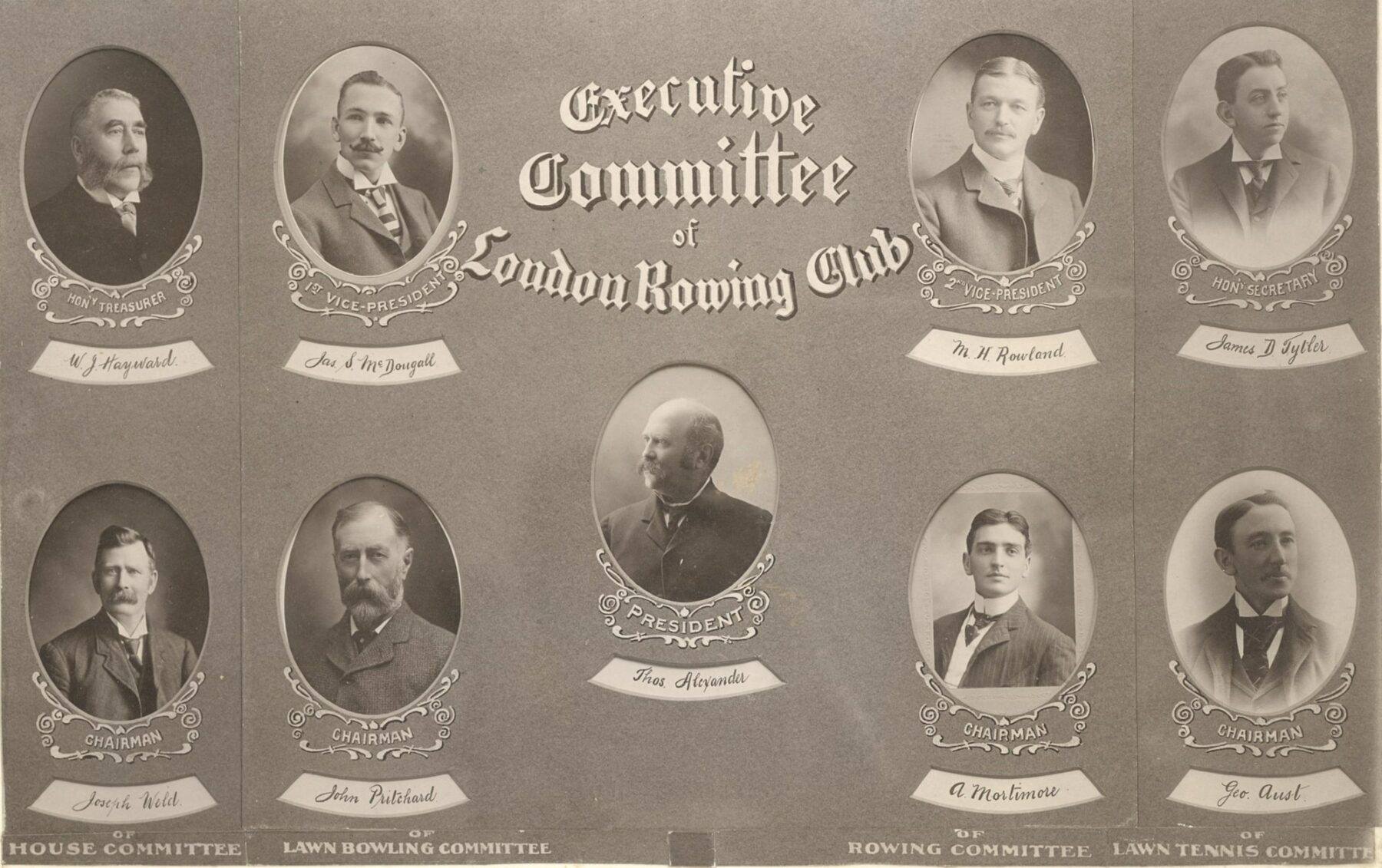
1999.011.201
The London Rowing Club Regatta
Spectators gathered to watch a London Rowing Club regatta on the Thames River in September 1903. While some took the streetcar to Springbank Park and watched from the river’s edge, others traveled to the site via canoe or rowboat. From this vantage point, they enjoyed watching single scull, four-oared, and tub races, among other events.
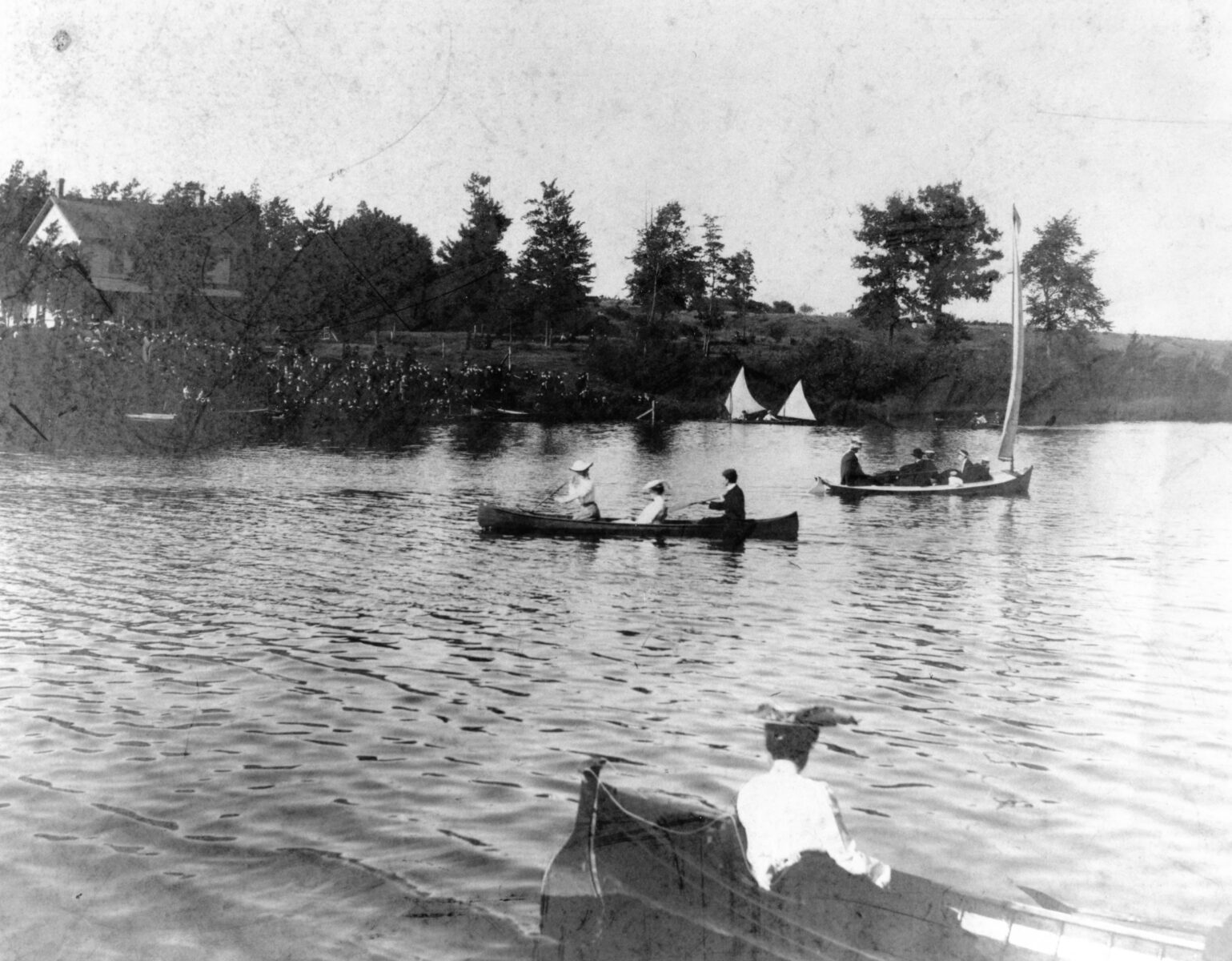
Steamers on the Thames River
Beginning in 1879, several different companies operated steamships on the Thames River between London and Springbank Park. Only the 1878 construction of the Springbank dam, visible in the picture to the right, made this possible because it resulted in deeper water levels. The last of the steamships wound up operations in 1899. A combination of disasters, competition from other nearby resort areas, as well as the electrification of the London Street Railway line to the park, made steamers unprofitable.

1961.127.041
The Thames River Navigation Company
To the right is a Thames River Navigation Company ticket. In April of 1879, this company was the first to launch a steamer, the Forest City (below, left) on the Thames River. This double-decked, side paddle-wheeler, featured a smoking lounge as well as two stained-glass windows at the stern. A month later, the company launched the Princess Louise (below, right). Both vessels transported passengers between downtown London and Springbank Park in style.

1978.010.004E
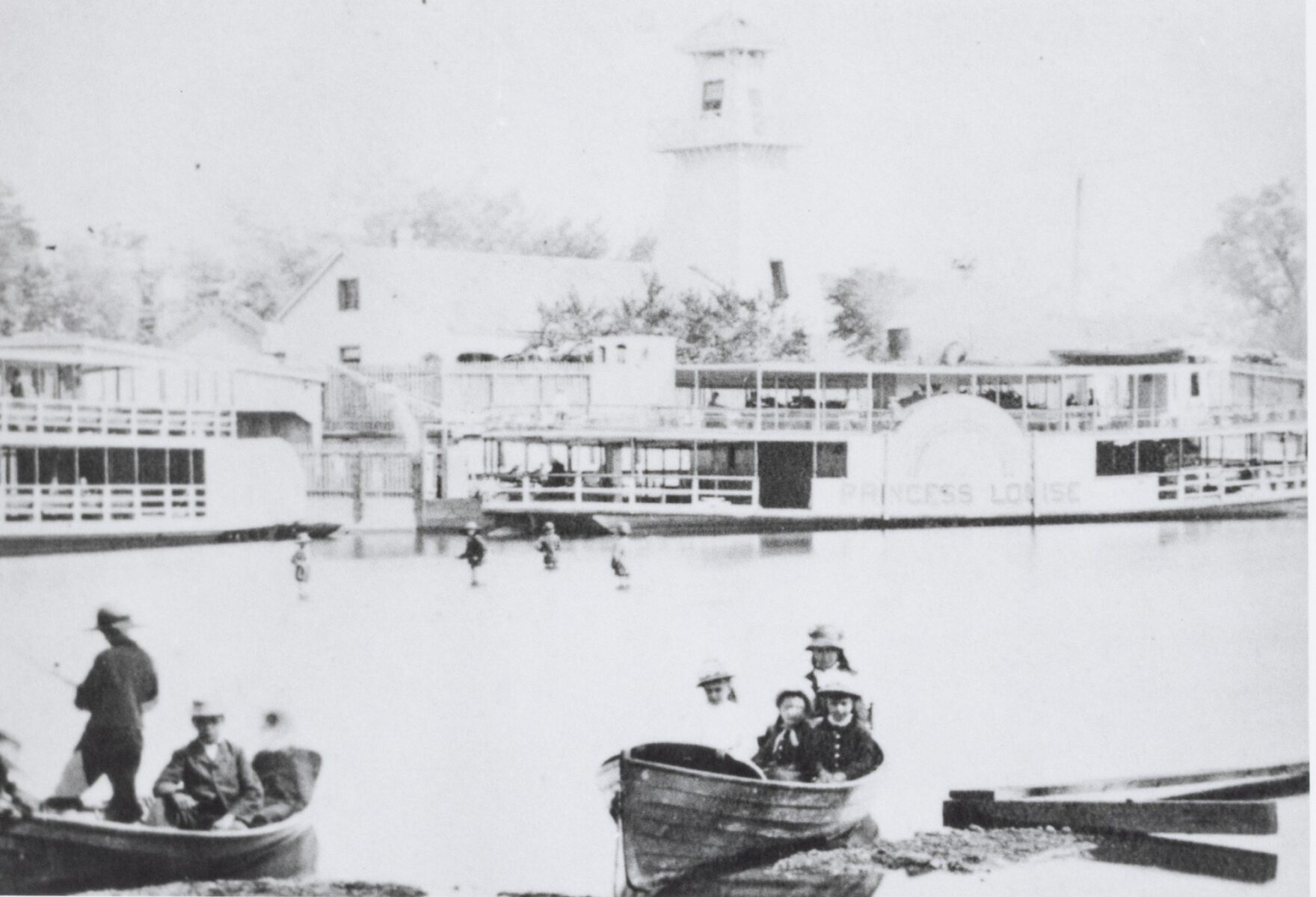
1978.010.002
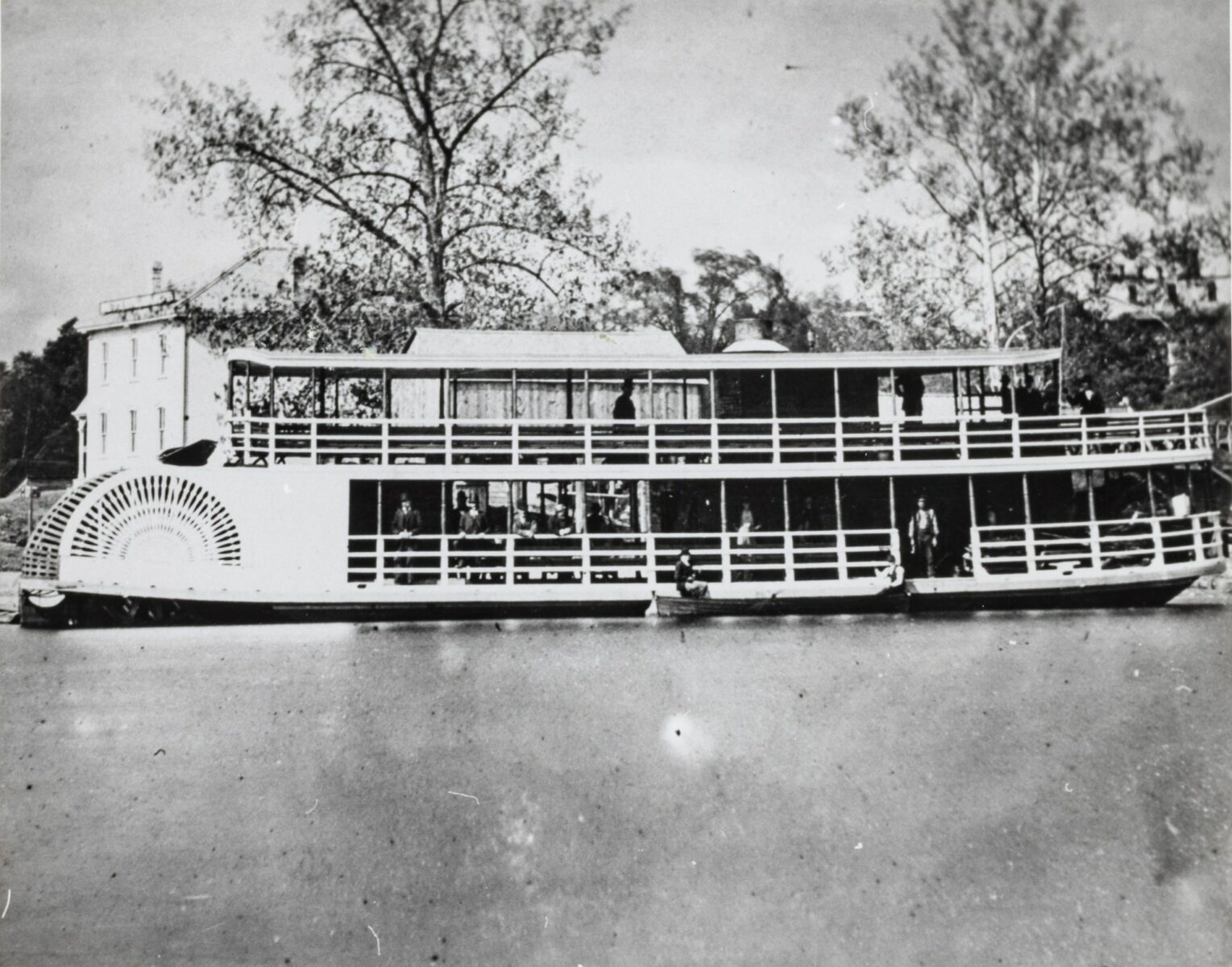
1978.010.008
The Victoria
In 1880, the London and Waterworks Line, a competitor of the Thames River Navigation Company, launched the Victoria, pictured above. The two companies vied for passengers in a rivalry that sometimes resulted in dangerous behaviour. For example, in 1880, the captain of the Forest City forced the Victoria near the shore. During the same trip, the Forest City later rammed the Victoria. The Victoria was to experience worse trouble the next season.
Coffins could not be got in London sufficiently for the dead and they have been telegraphed for to Toronto, Hamilton and other places.
Amelia Harris, Diary Entry, May 26, 1881
The drownings had all taken place within 30 or 40 feet of the shore – most of them within 15.
Lambert Payne, London Free Press, May 25, 1881
The Victoria Disaster
To the right is an artist’s depiction of the wreck of the steamer Victoria. It capsized on the Thames River near present-day Greenway Park on Victoria Day (May 24), 1881. The overcrowded steamer was on its way back downtown from Springbank Park. Something caused the passengers to rush to one side of the vessel. It listed and then the boiler rolled off its mount. Falling debris crushed some. Others drowned. Approximately 180 passengers died, most women and children. It is still one of Canada’s worst maritime disasters.
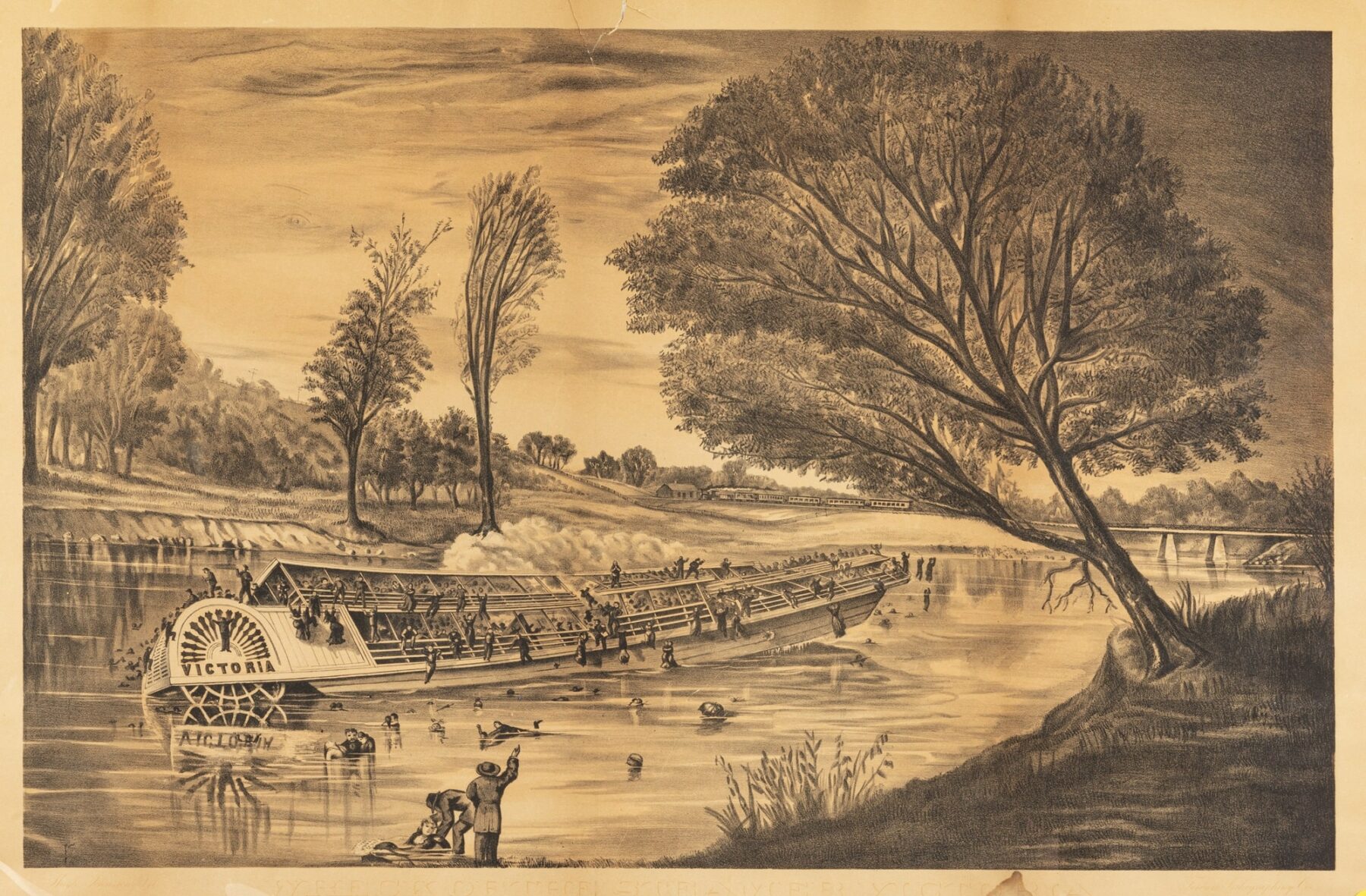
1958.001.339
Click on the objects to learn more…
The Western Fair
London…has the material out of which such exhibitions are made. It has a numerous and wealthy population. The soil is fertile, the climate good, and the people intelligent…
London Free Press, September 1869
From the first Western Fair in 1868, which showcased the region’s agricultural, industrial, commercial, and artistic output, the annual event has adapted to evolving fair goers’ tastes. Over the years, it added shows, a midway, and many other attractions to appeal to the tens of thousands who attend every year.
From 1846, the provincial ministry of agriculture organized annual fairs to showcase the products of both farmers and manufacturers. London hosted the event several times.
By 1867, the East Middlesex Agricultural Society and the London District Horticultural and Agricultural Society recognized London could support its own fair. The two groups amalgamated to form the Western Fair Association.
Apart from the years 1940 to 1947 and 2020 to 2021, the Western Fair has happened every year since 1868.
The “Provincial”
Miss J. Brady of Port Stanley won first prize for her embroidery in worsted wool at the Provincial Fair held in London in 1869. The Western Fair Association supported the Agricultural and Arts Association to stage the event. London hosted the “Provincial” in 1854, 1861, 1865, 1869, and 1873.
The Crystal Palaces

2010.004.009
The above image depicts the octagonal Crystal Palace in 1873. It stood on the north-east corner of Central Avenue and Wellington Street, the original fairgrounds near today’s Victoria Park. This structure was erected in 1861 for the Provincial Exhibition. The building remained in use until the Western Fair relocated to Queens Park in 1887. By this time, some civic leaders and their many urban supporters demanded that valuable downtown land be used for new housing and for improving transportation links.
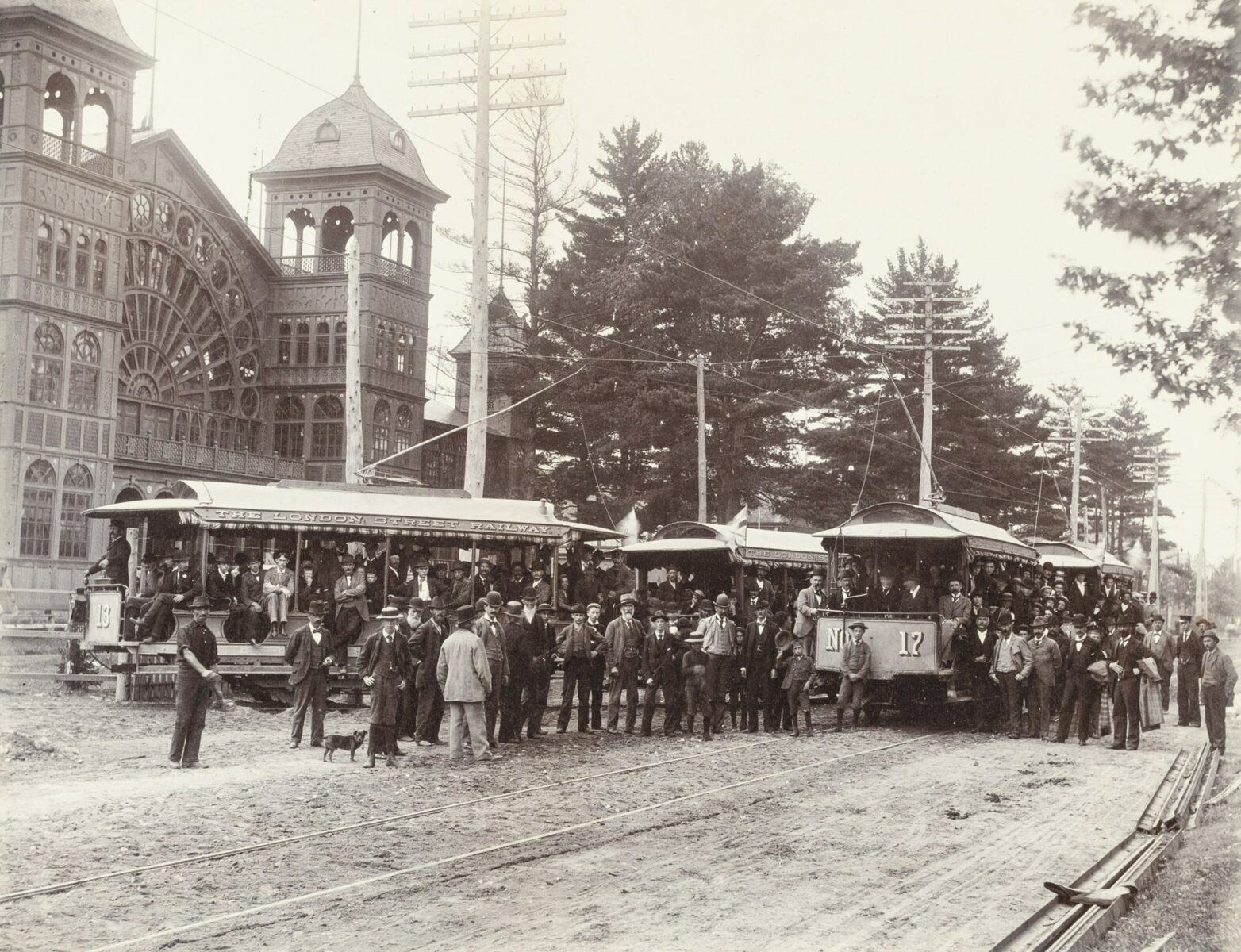
London architect George Durand’s Crystal Palace is pictured in the left background of the above photograph. When the Western Fair relocated to Queens Park in east London in1887, Durand won the competition to build the new main exhibition building. He drew inspiration from Joseph Paxton’s original 1851 Crystal Palace in England. An impressive main building projected the importance of the Western Fair Association and its annual event. An arsonist destroyed Durand’s structure in 1927.

1989.018.001
“All Roads Lead to the Western Fair”
The Western Fair Association produced this promotional poster for the 1916 edition of the annual fair. A map of southwestern Ontario, it shows the roads, railways, and shipping lanes that connected London to communities near and far in the region and far beyond. These transportation links drew exhibitors and fair-goers alike. They helped extend the reach and influence of the Western Fair and London, too.
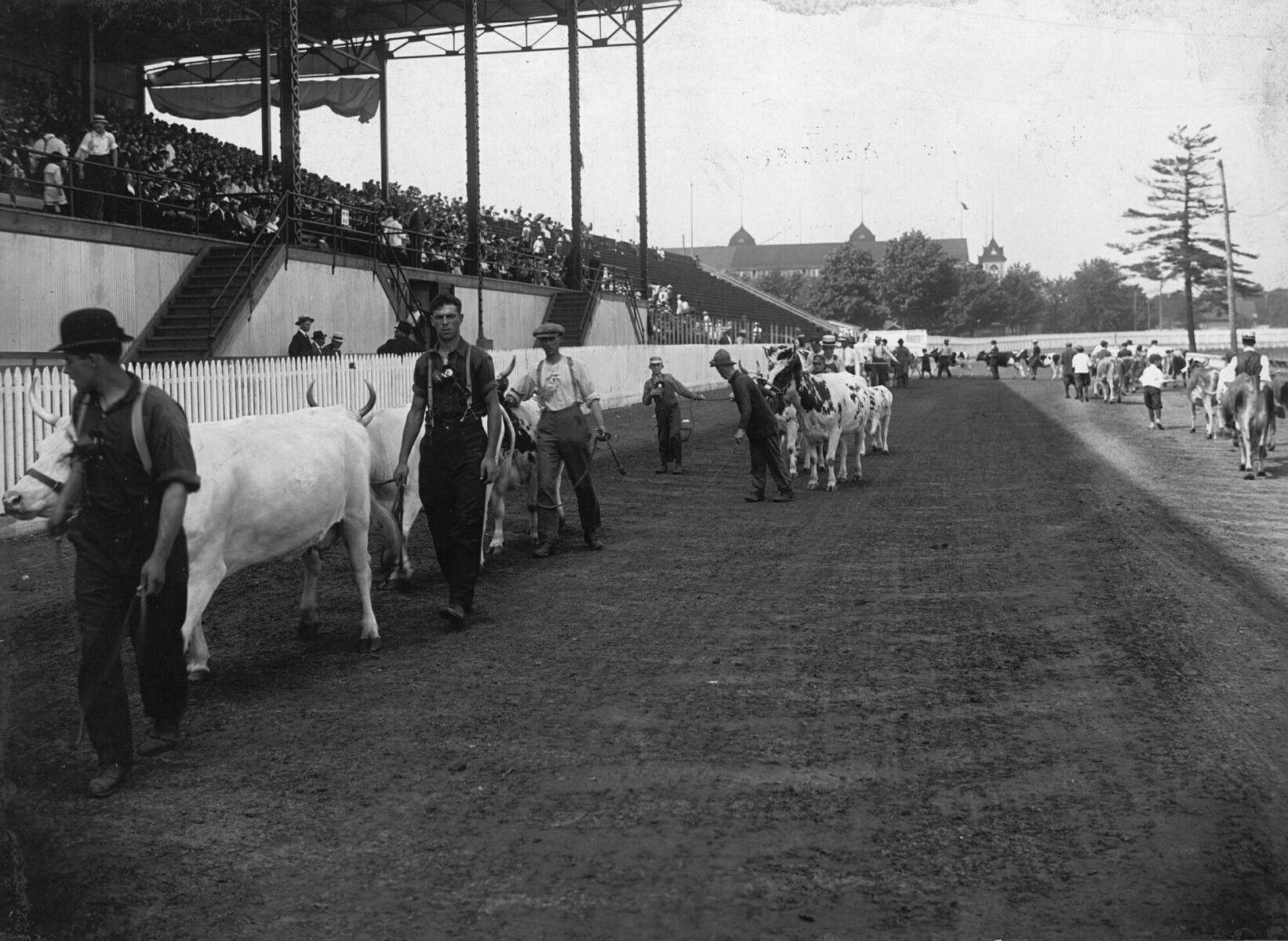

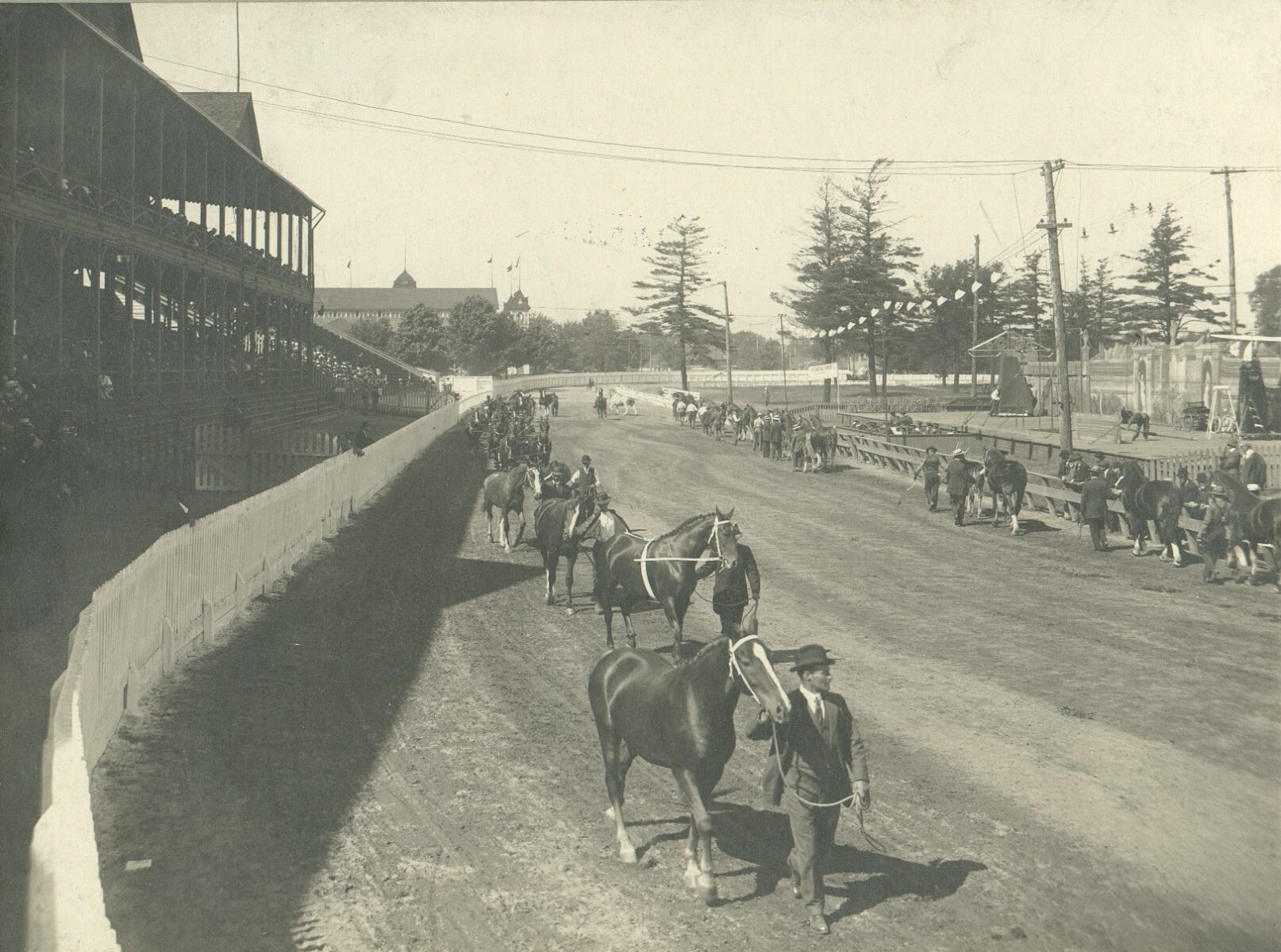
Promoting Animal Husbandry
Above, farmers display their cows, sheep, and horses. From the beginning, the Western Fair encouraged improved practices in all forms of agriculture, including animal husbandry. Farmers displayed their animals, hoping they would receive prizes. This raised farmers’ profile in the community, lead to increased sales, and raised the profile of agriculture in the region and the province.
Prize-Winning Chickens
Londoner John “Jack” Huse Saunders (far right in the photograph below) won prizes for the chickens he showed at various Western Fairs. A wagon-maker by trade, for many years, Saunders worked hard to advance the poultry industry. As part of this effort, he helped make the poultry department at the Western Fair one of the most important poultry events of the country. Saunders later served as director, vice-president, and then president of the Western Fair.
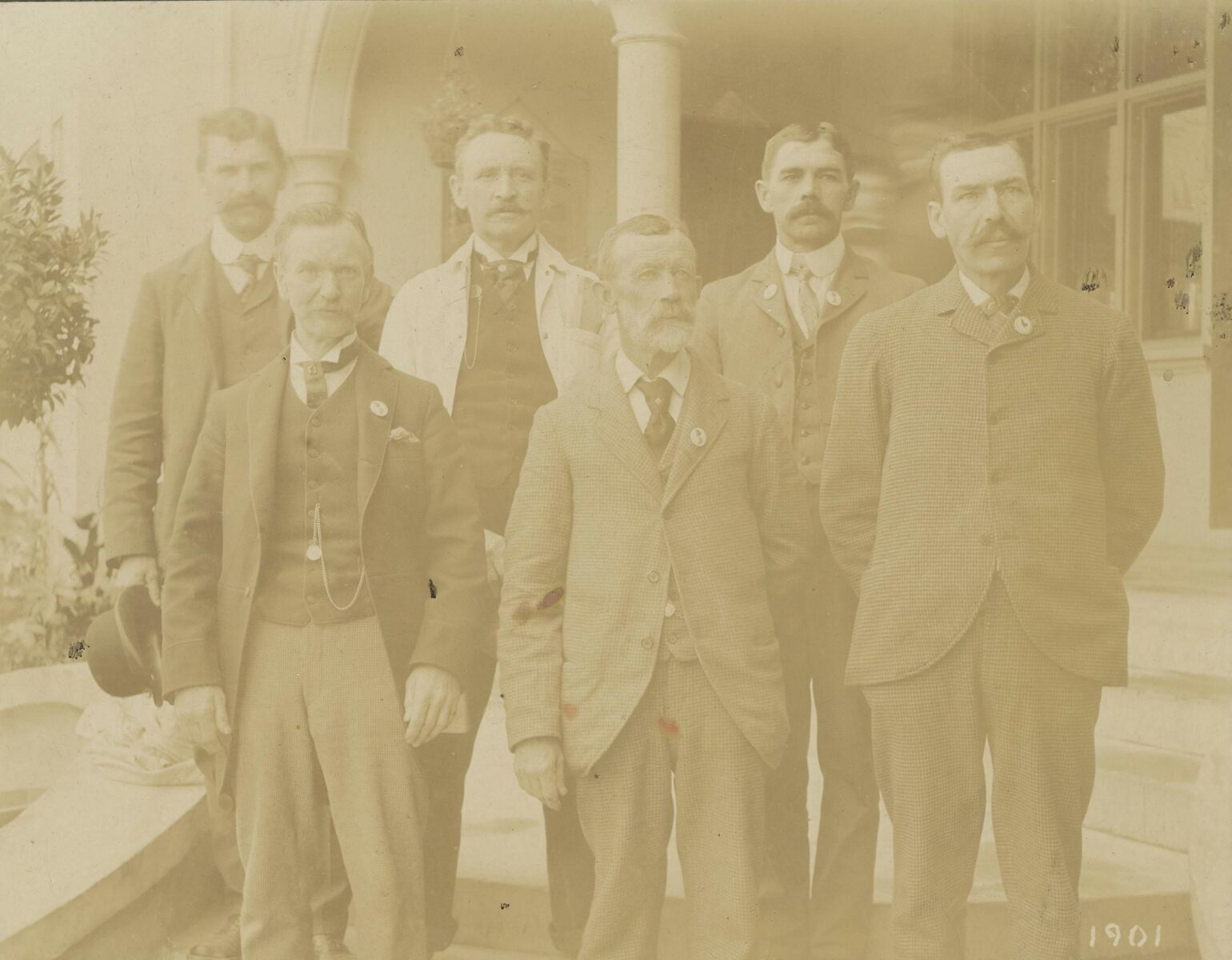
1980.064.020
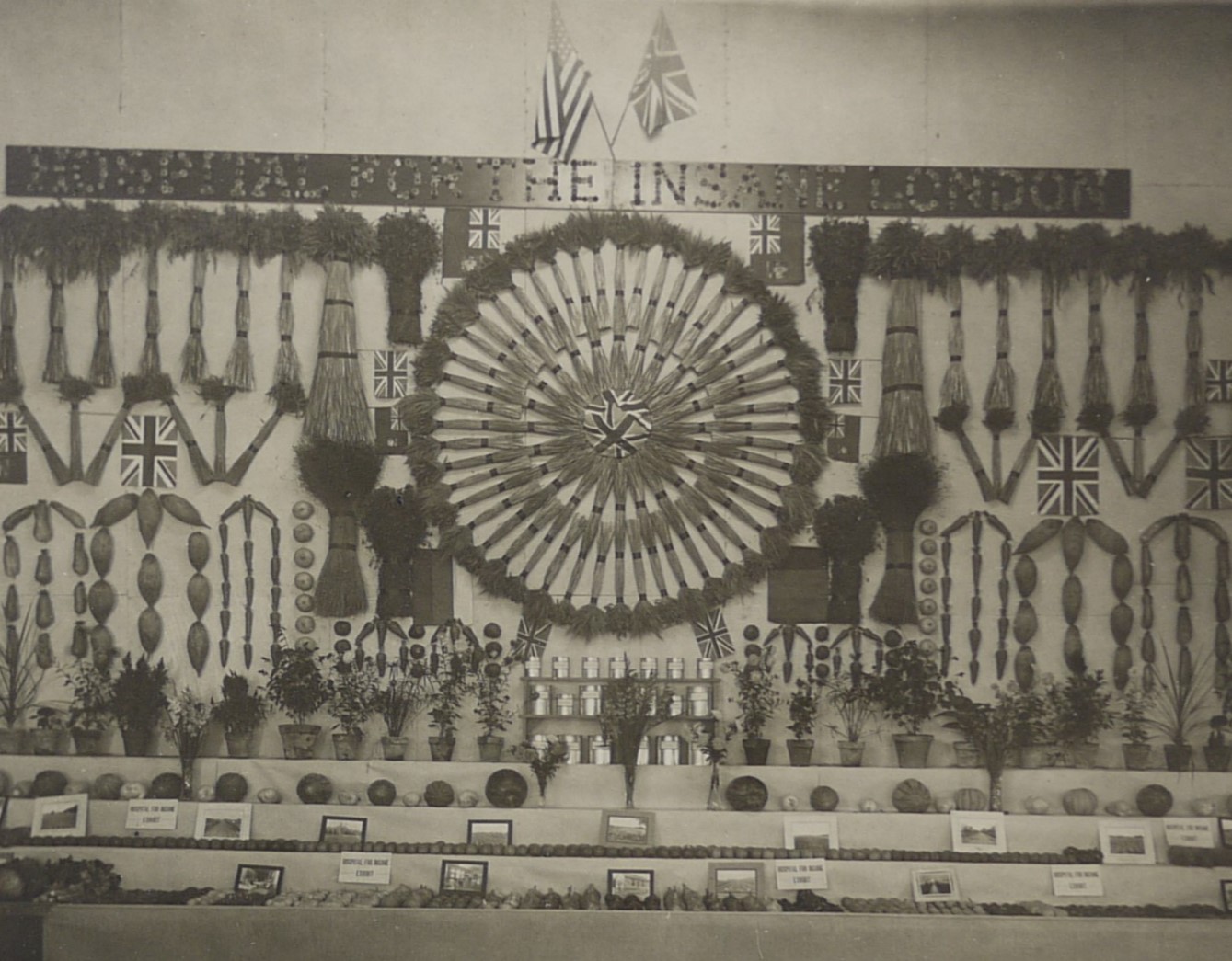
2008.005.302


2017.022.001
Promoting Manufactured Goods and Services
Various businesses and organizations from London and beyond displayed their goods at the Western Fair. In competitions, they proved the quality of their wares. From its founding, the Fair provided manufacturers with the opportunity to showcase new products, demonstrate their goods, and extend their reach to new markets.
Click on the objects to learn more…
The Women’s Department
London’s Dorothy Luney submitted a range of her handiwork for judging at the Western Fair in 1934 and again in the 1960s. She won awards for a blouse, hemstitching, smocked dresses, hooked rugs, a carriage cover, needlepoint, as well as an embroidered teacloth. From its founding and for many years after, the Fair featured gender-specific competitions. Women submitted for judging examples of their culinary prowess, sewing, knitting, and fancy work. Men, for their part, displayed the products of their paid labour, agricultural or manufactured.
Special Attractions at the Western Fair
The Western Fair drew performers and special acts from near and far to entertain the crowds of visitors who flocked to the event each year. Although the Fair had a strong educational purpose, organizers knew that people were also looking to have fun. In the late 19th and early 20th century, Fair organizers worked hard to ensure that acts didn’t endanger morals. This meant making sure performers, especially women, were respectable.
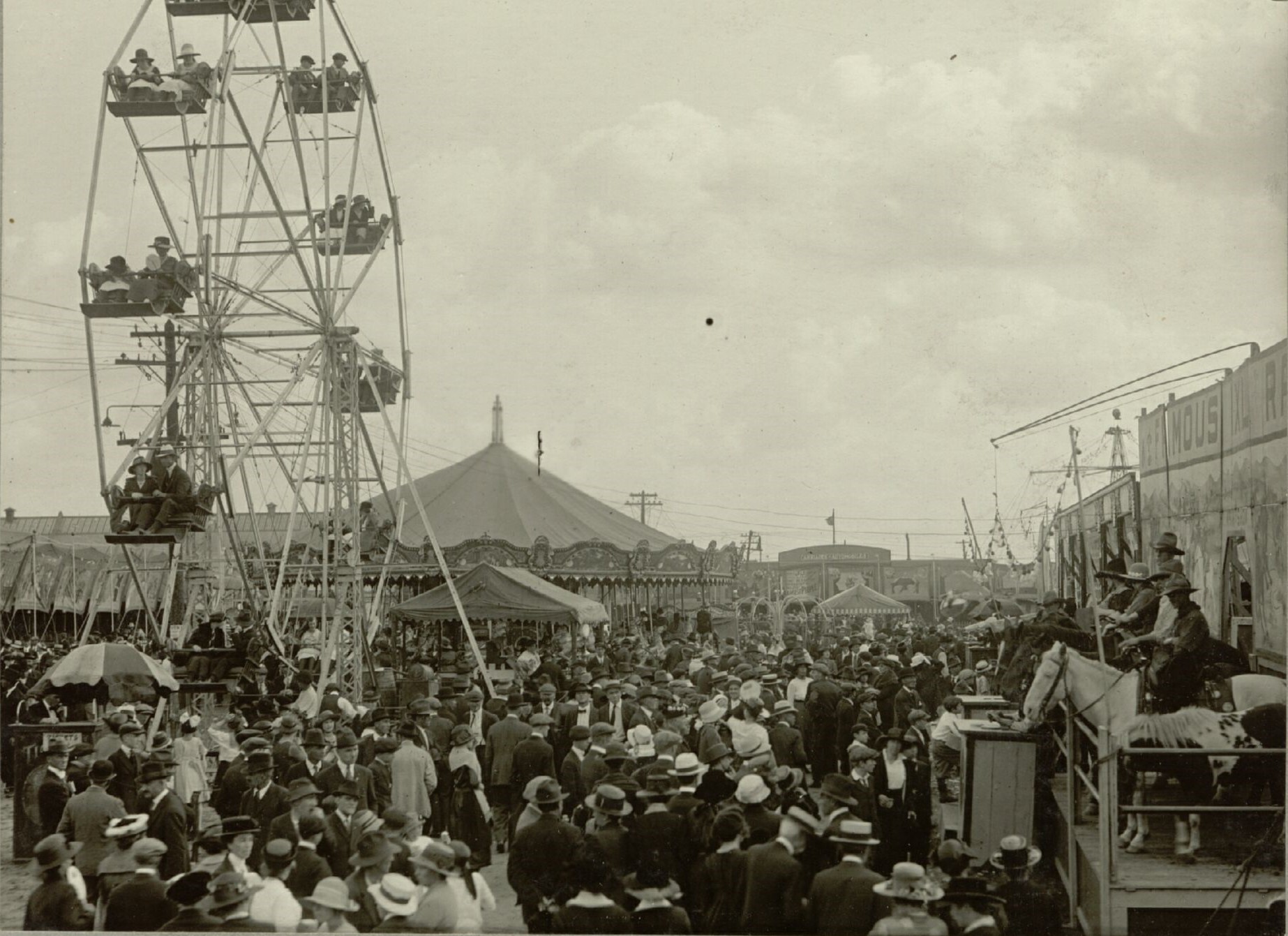
Memories of Fun at the Western Fair
Over its long history, the Western Fair has been a highlight of the year for tens of thousands of people. To help visitors remember their experiences, vendors and others have made available a wide range of souvenirs and mementos.


